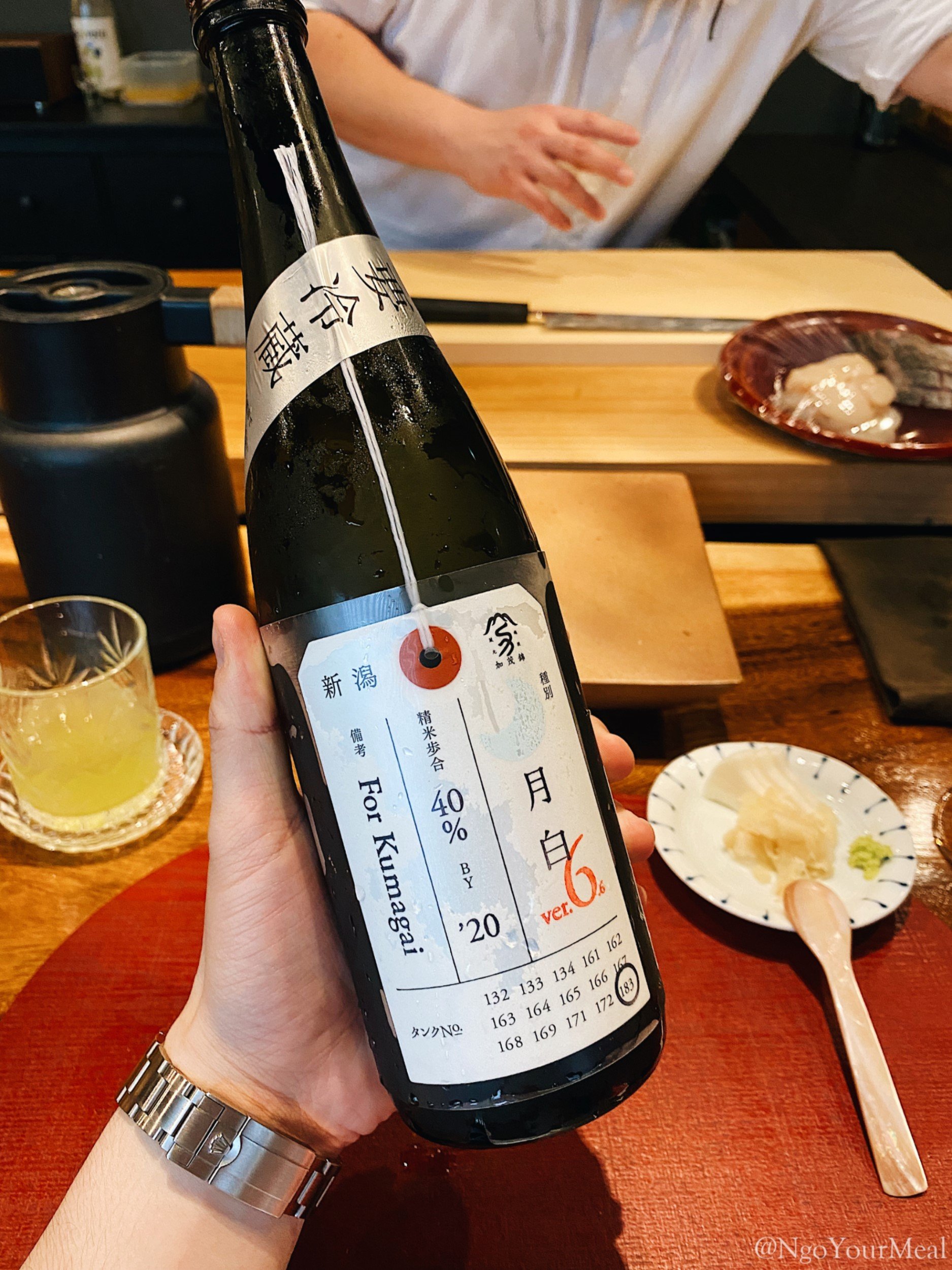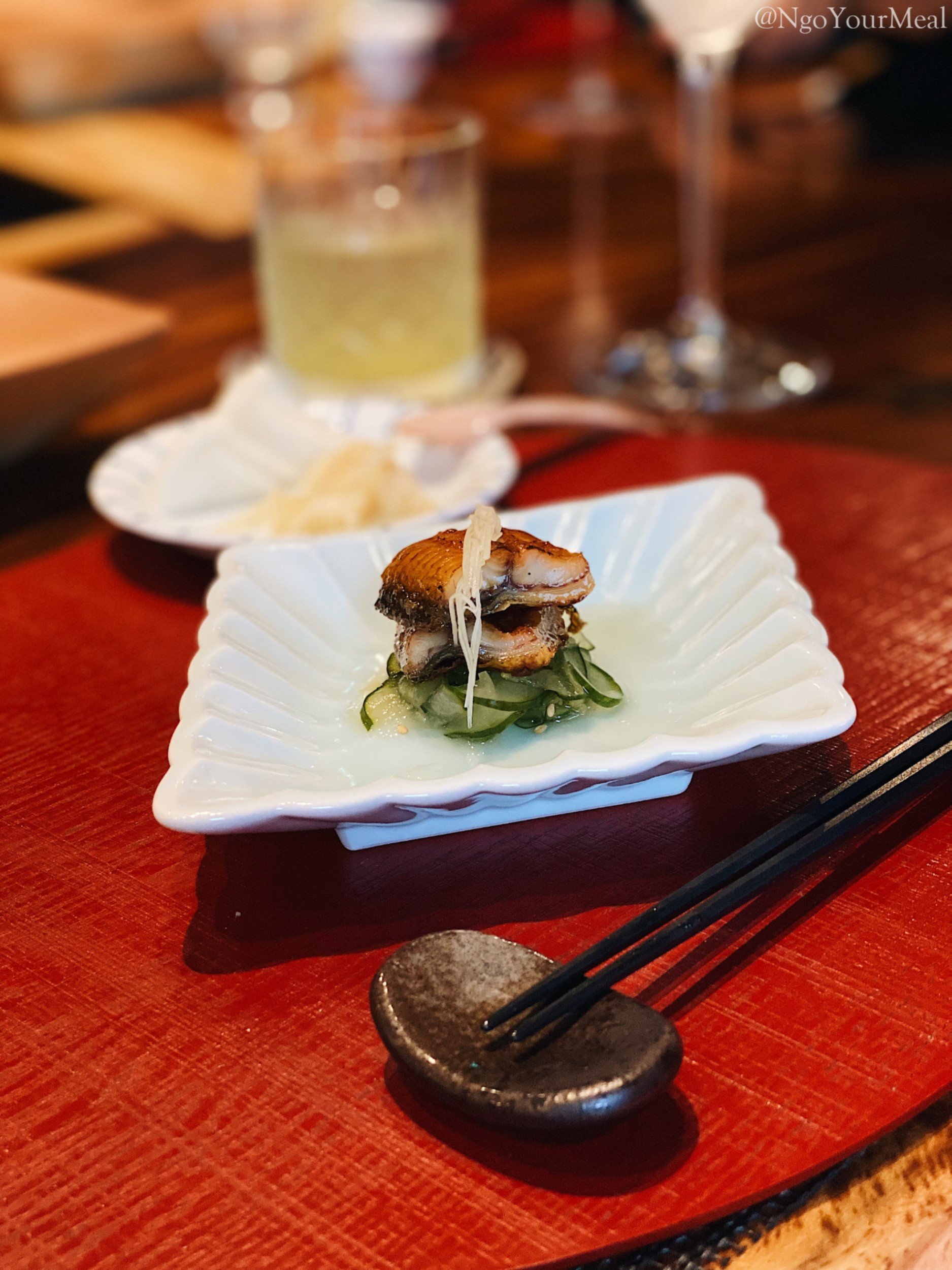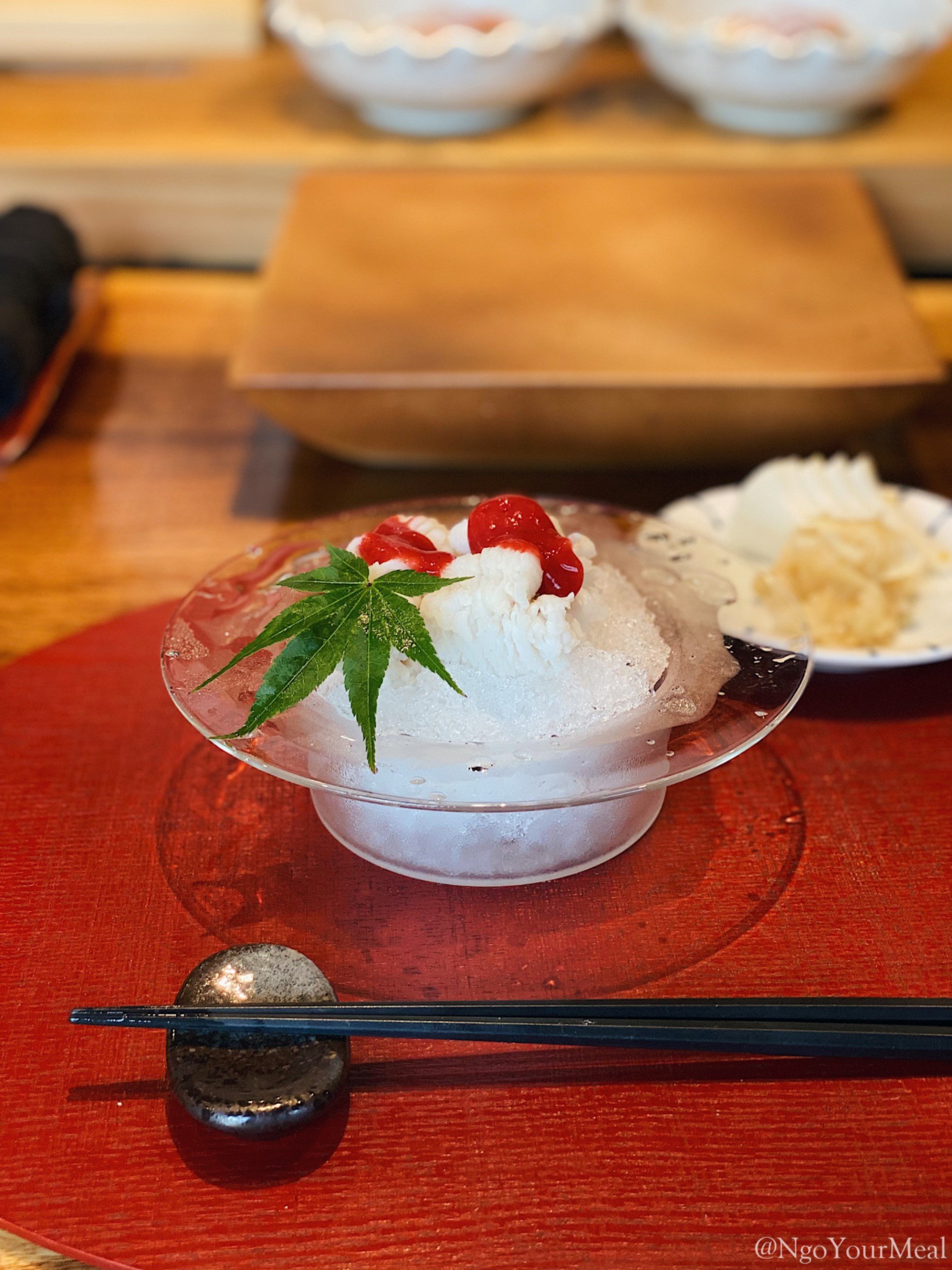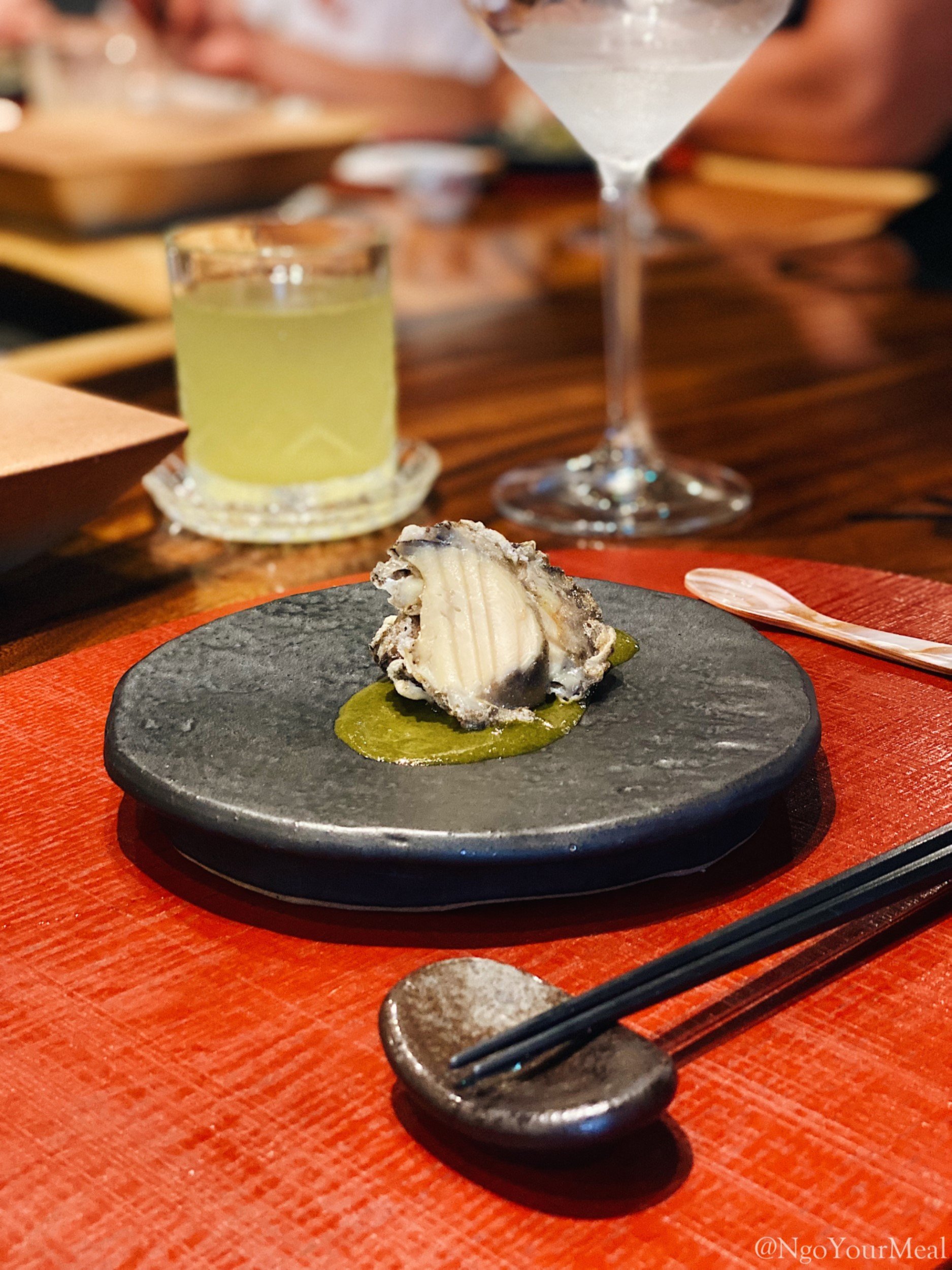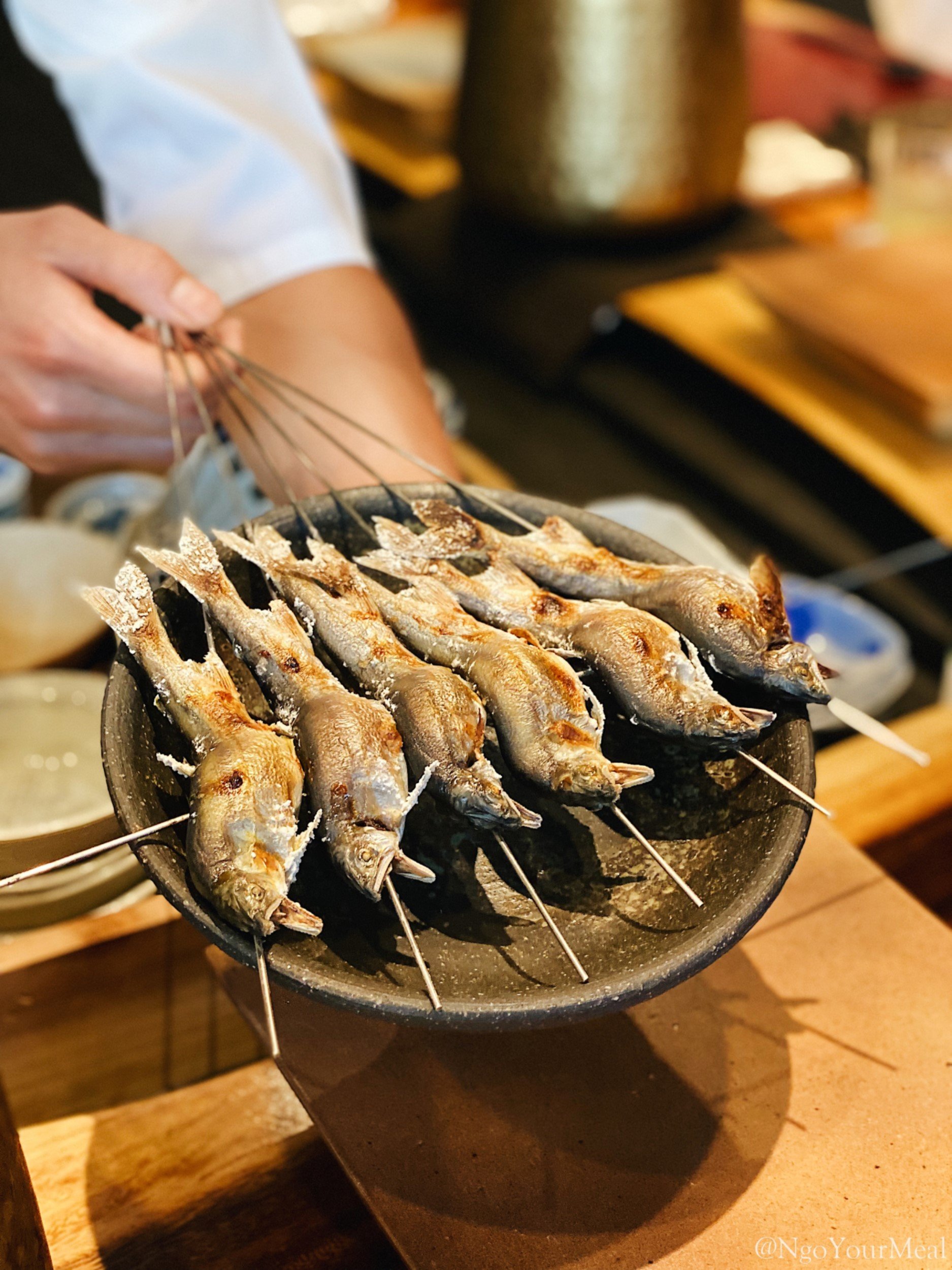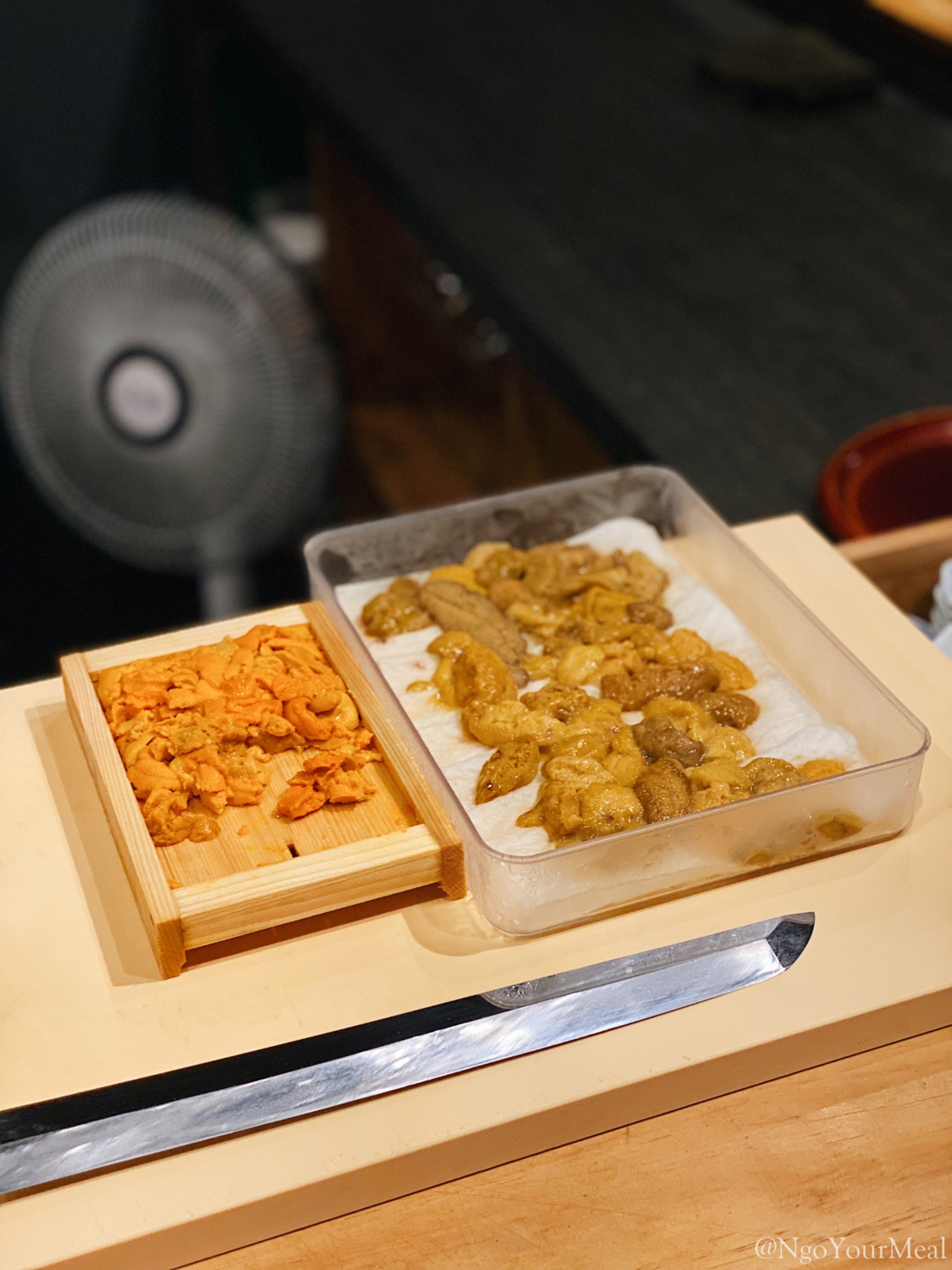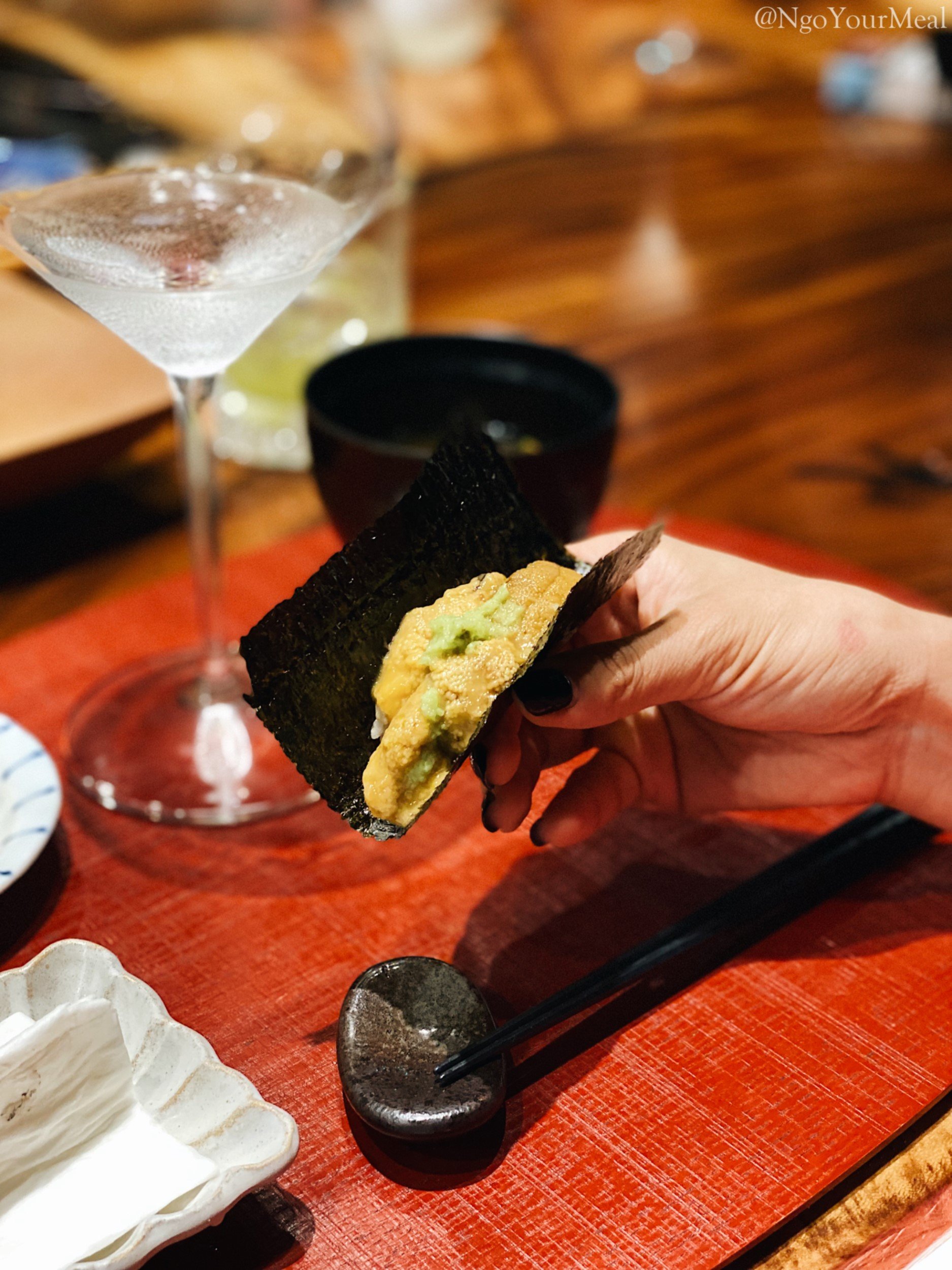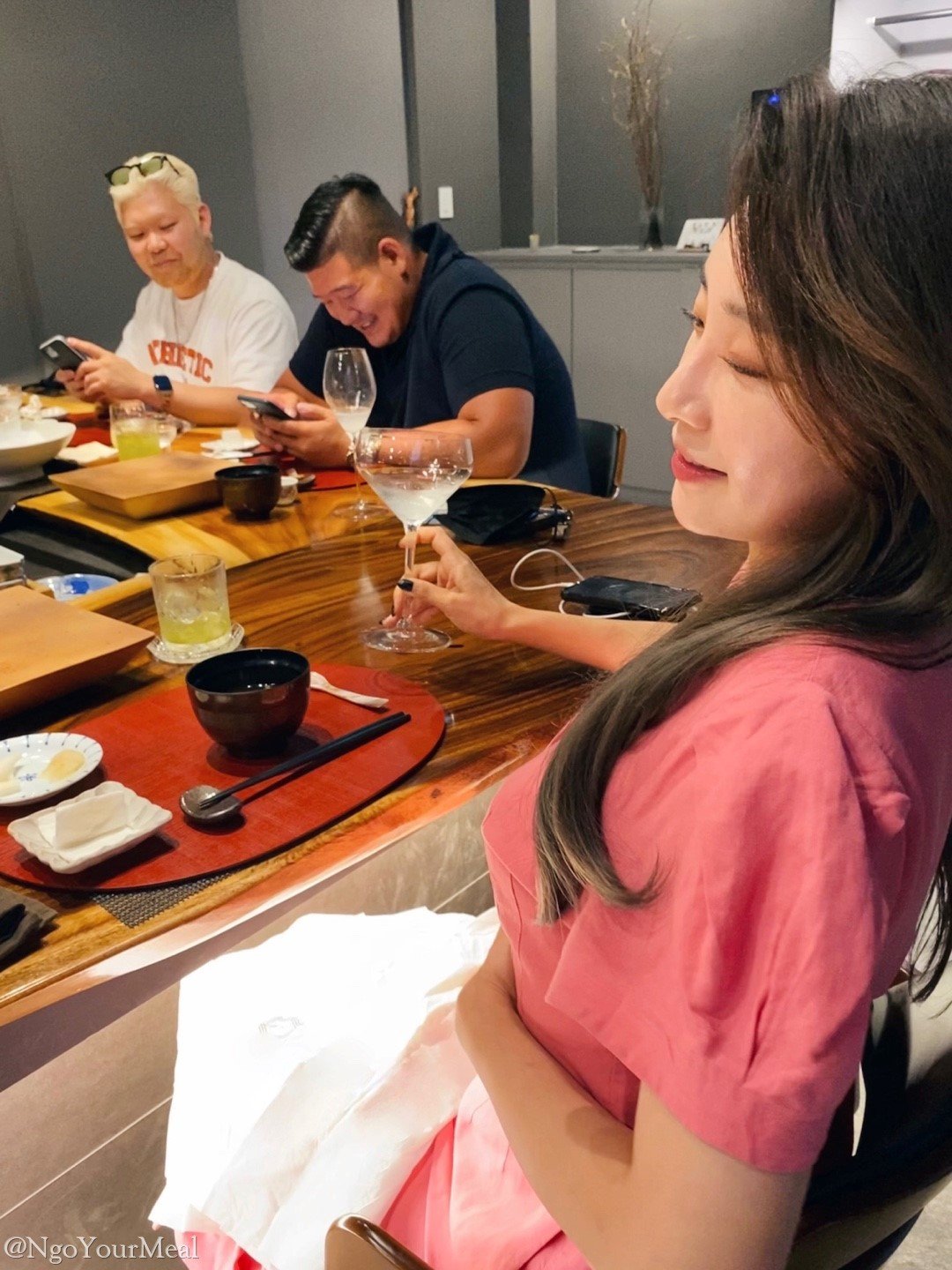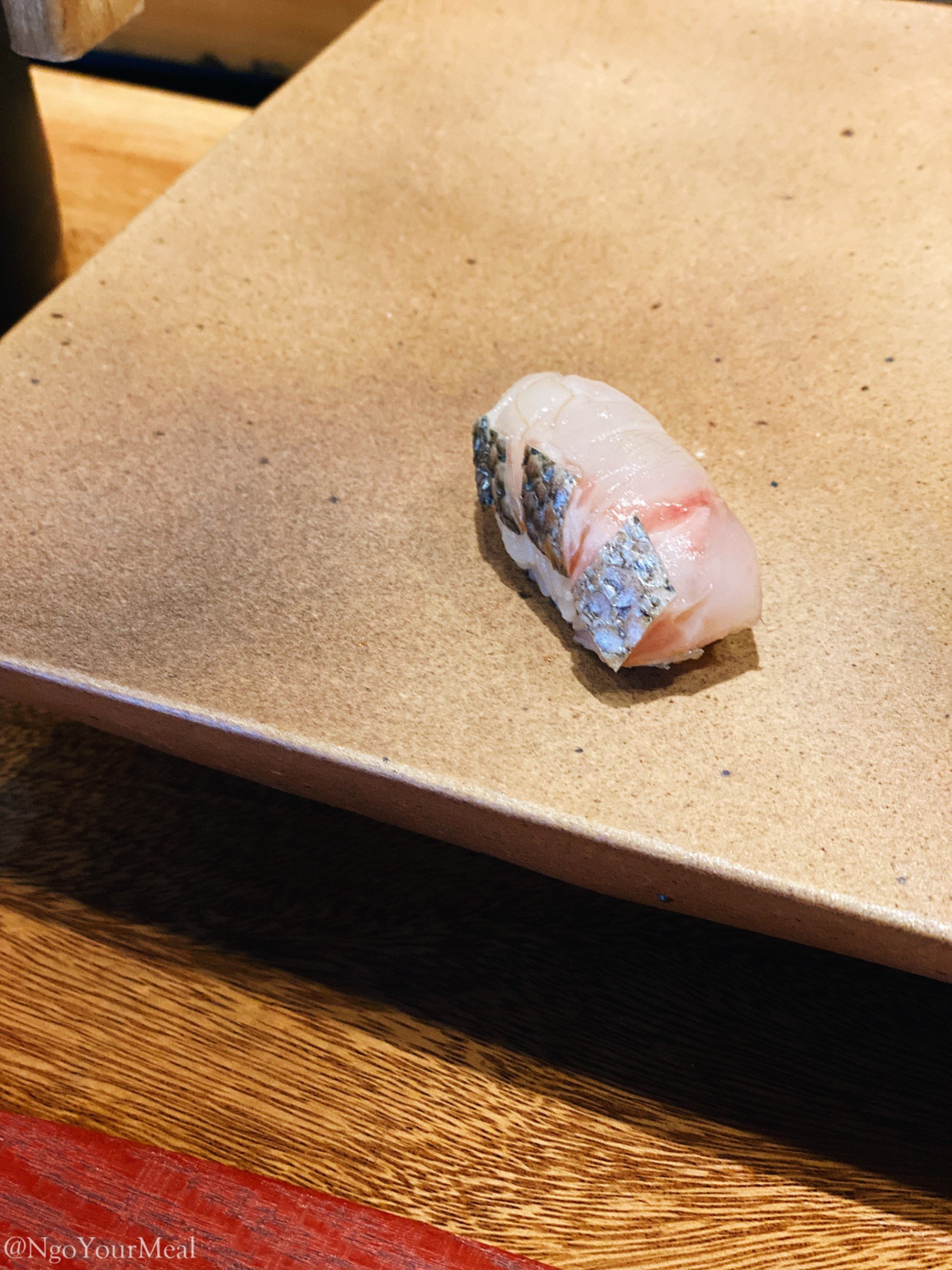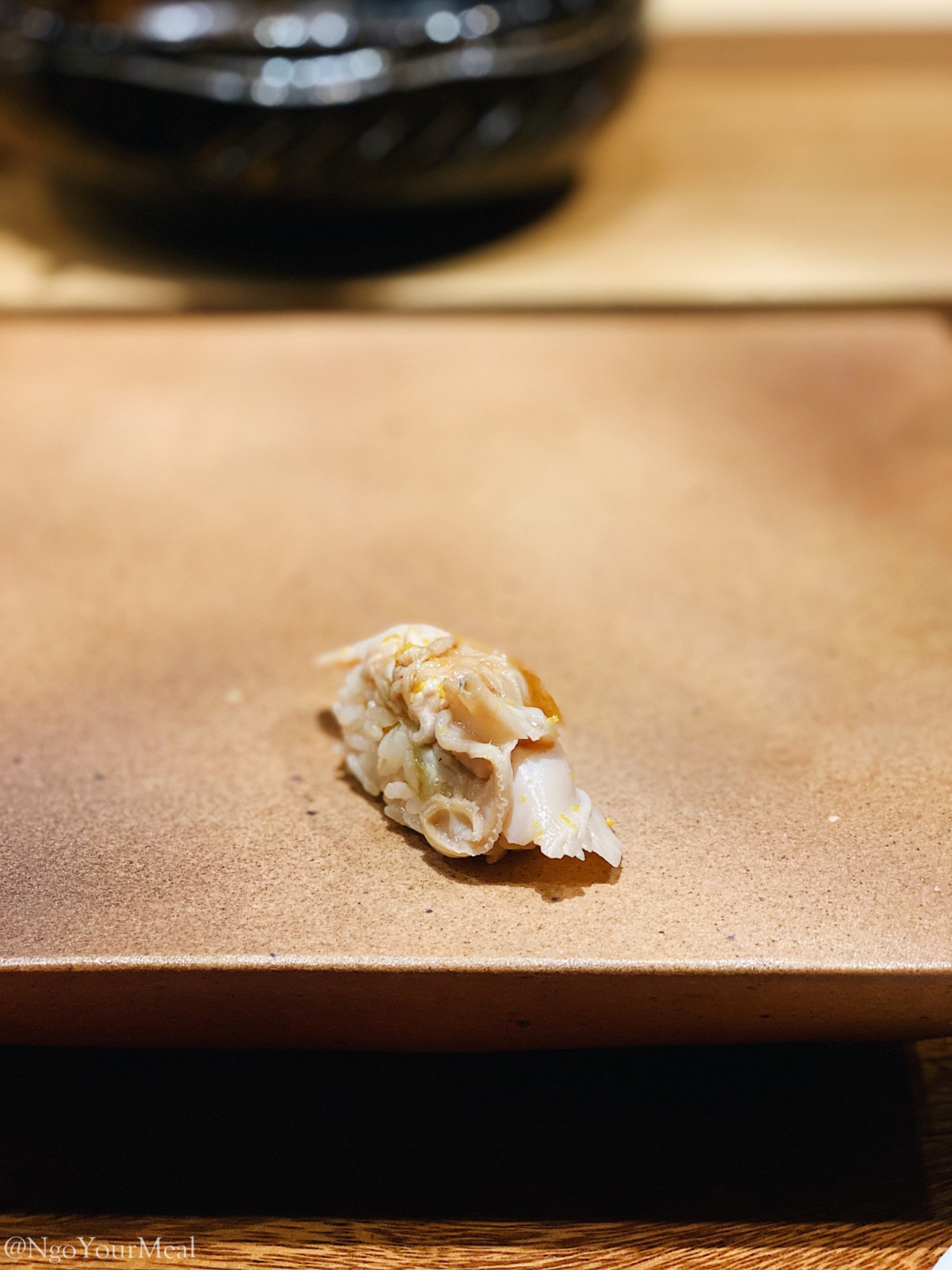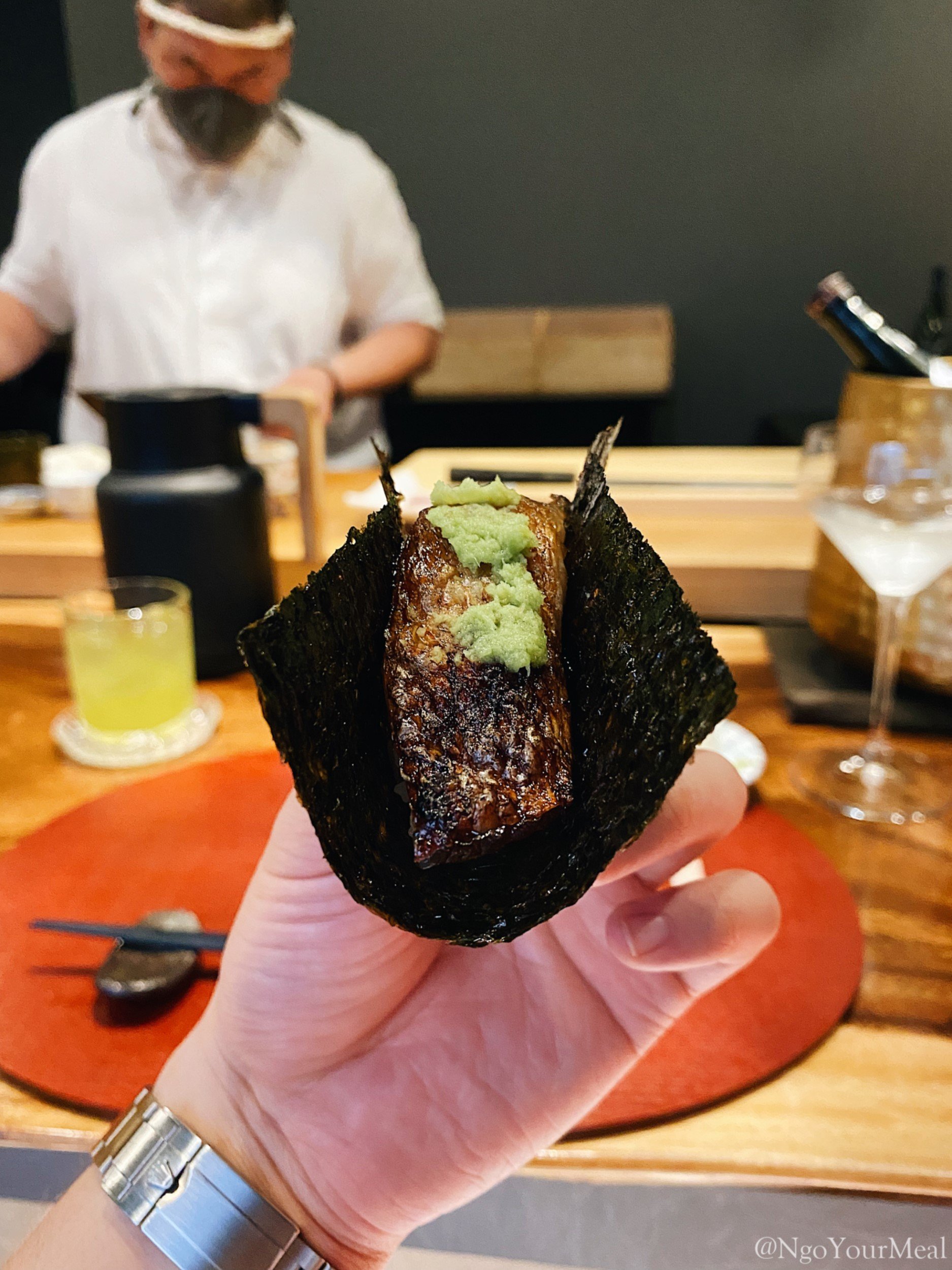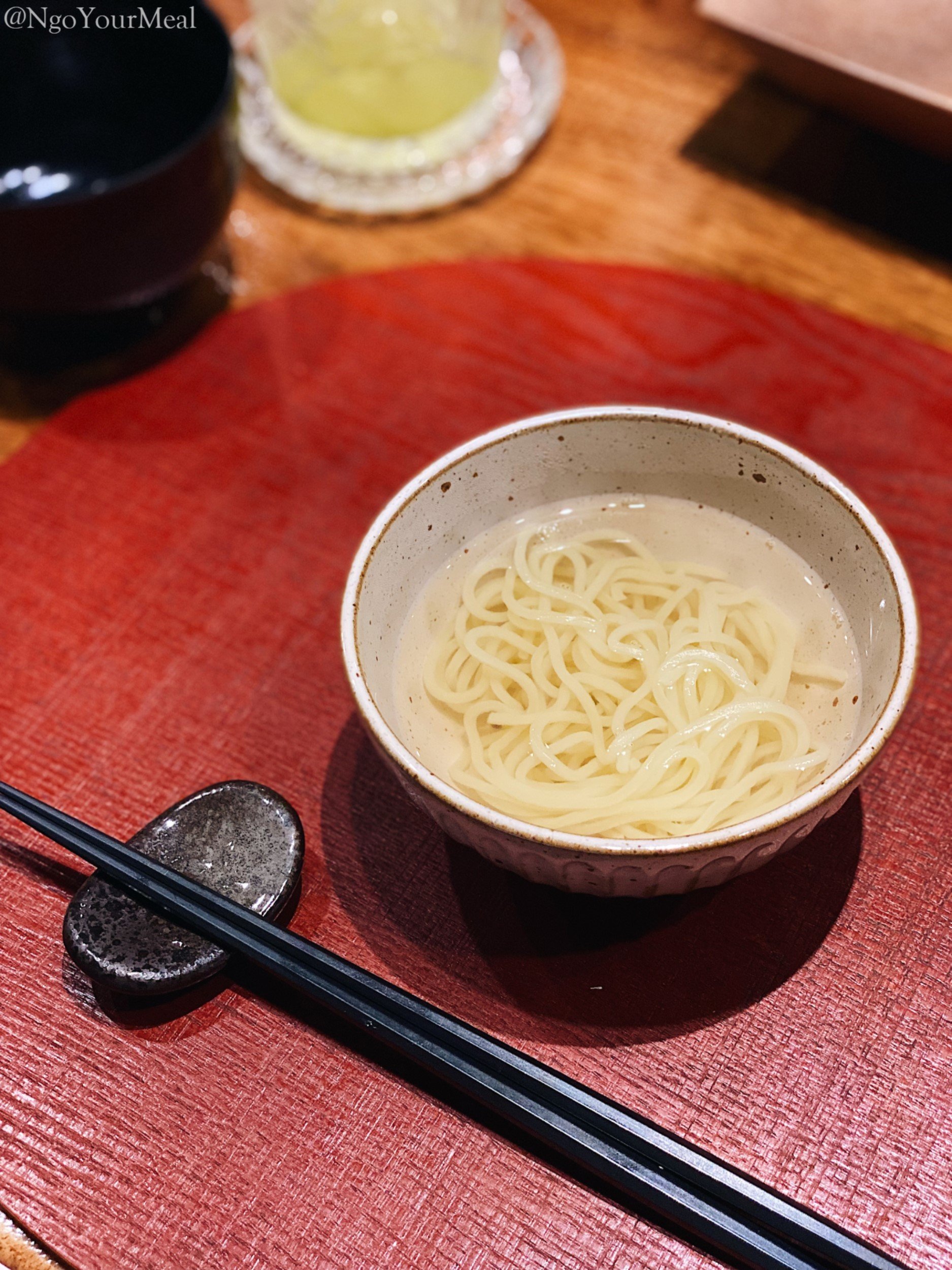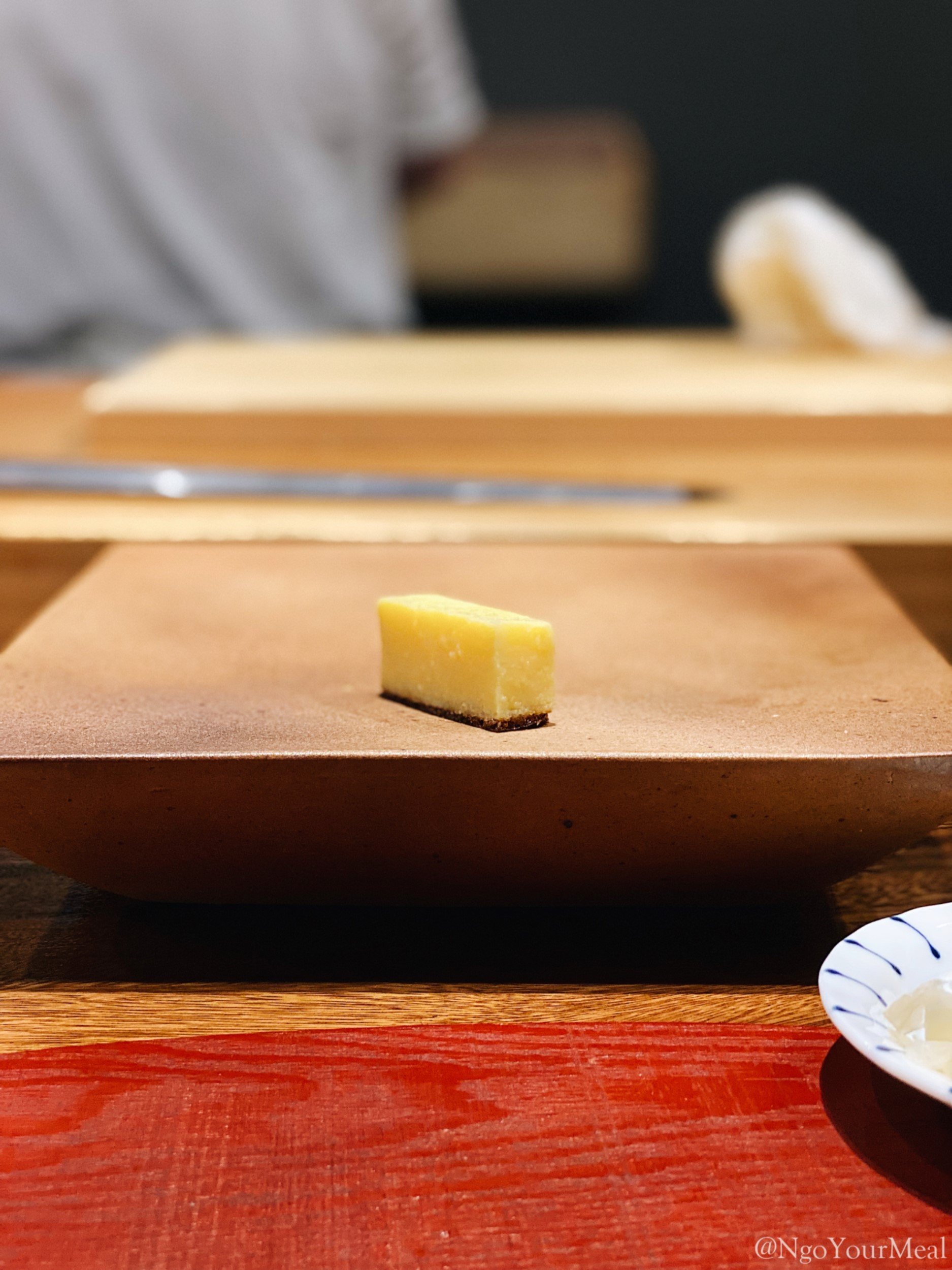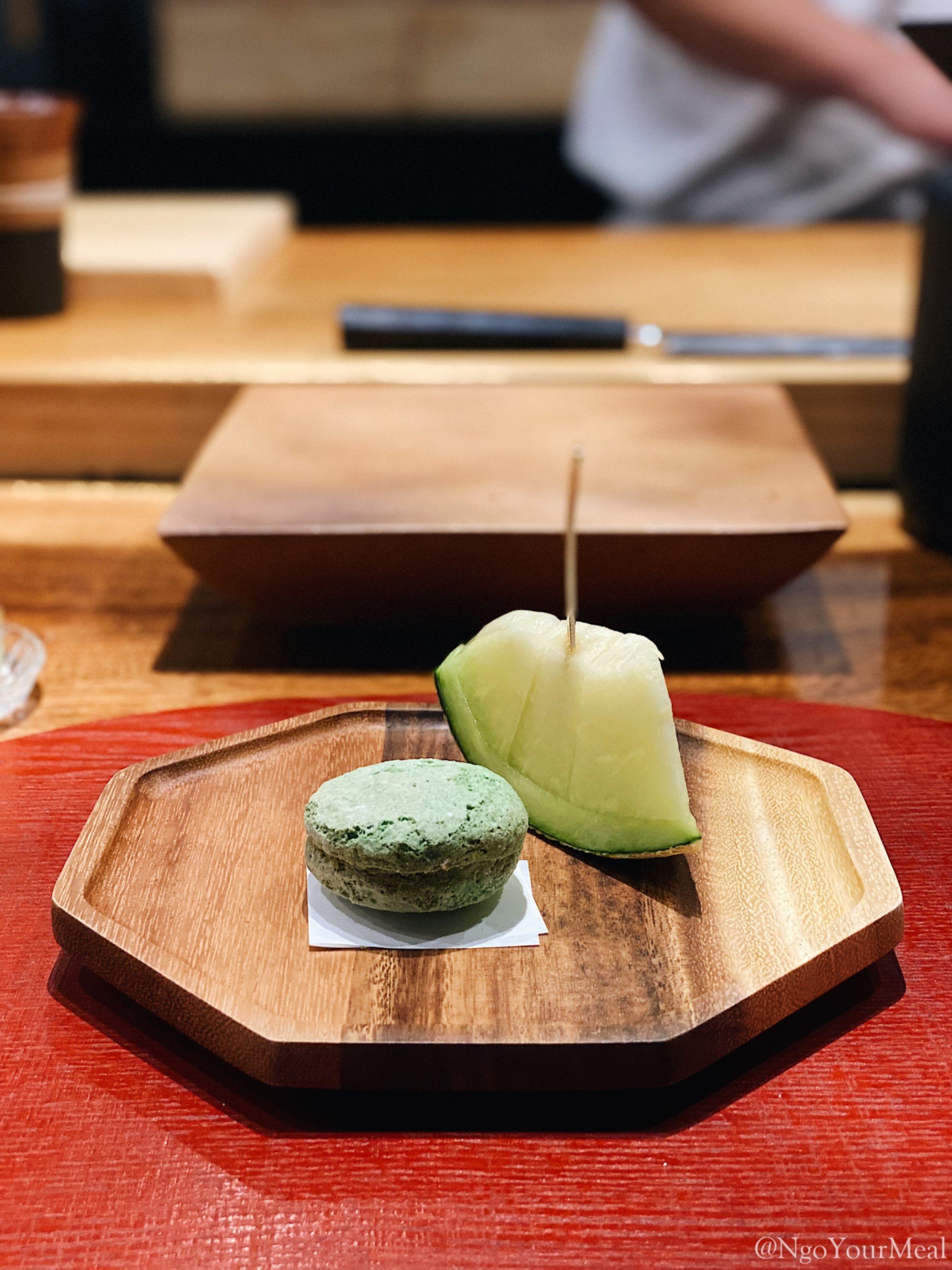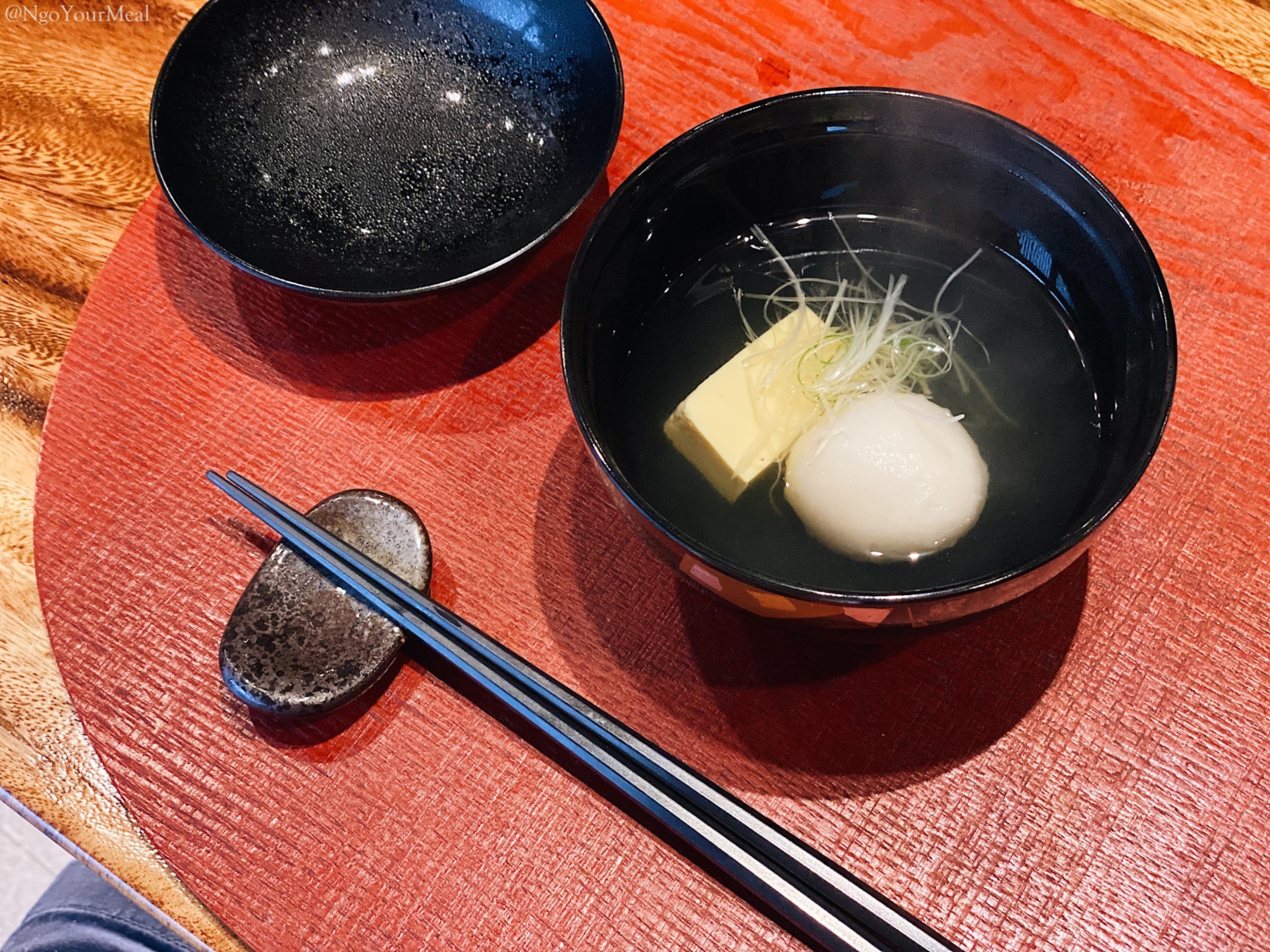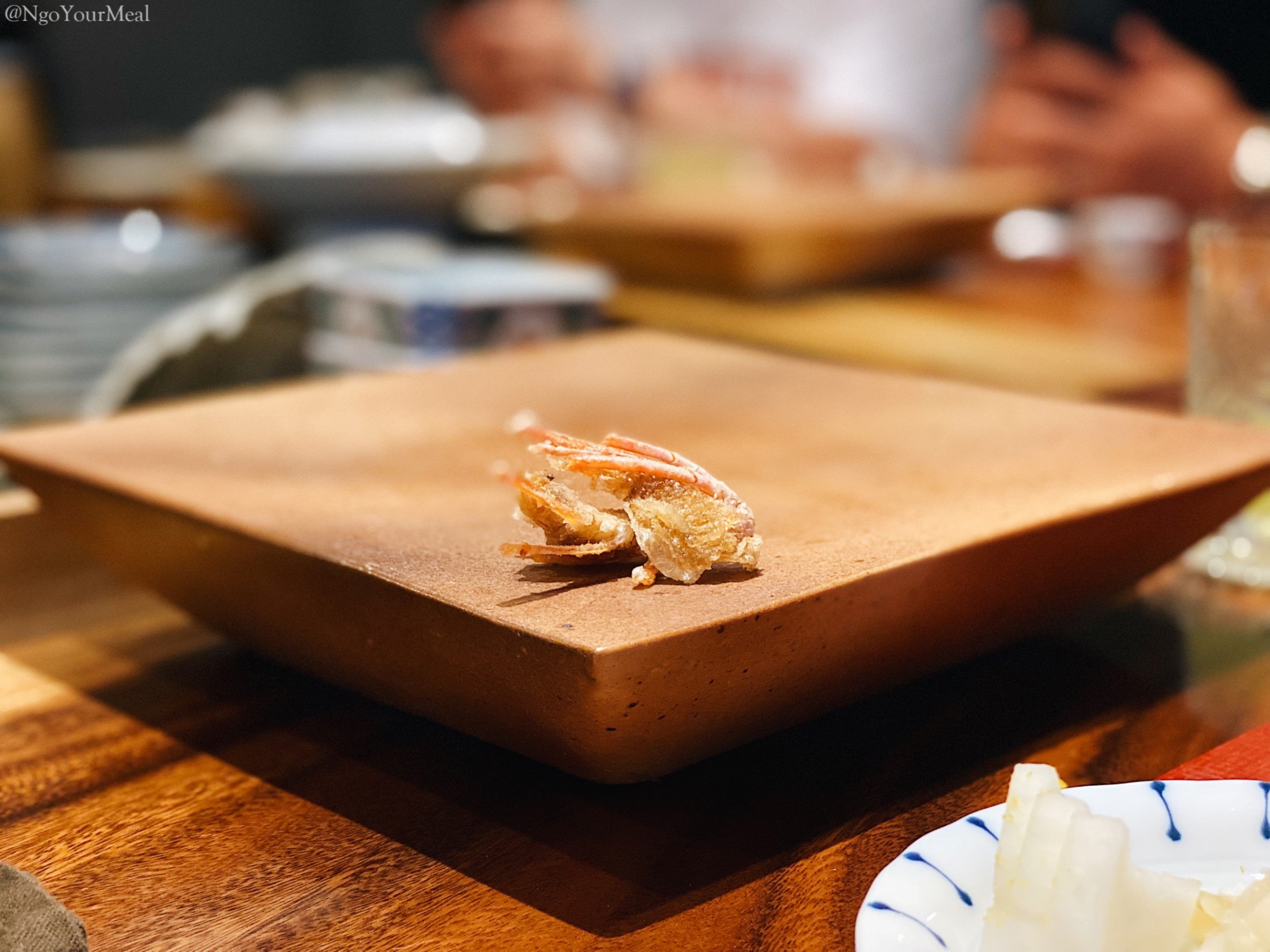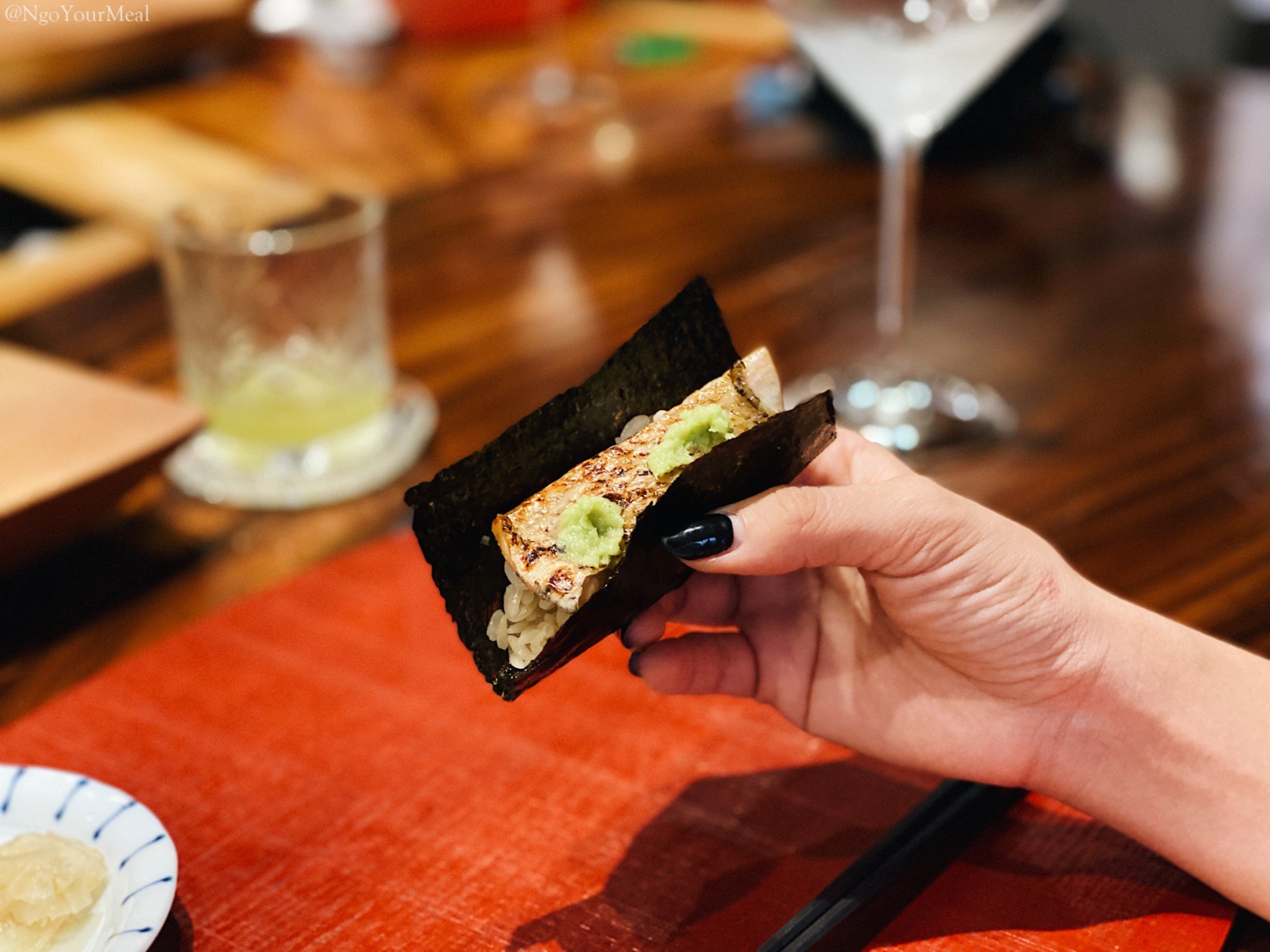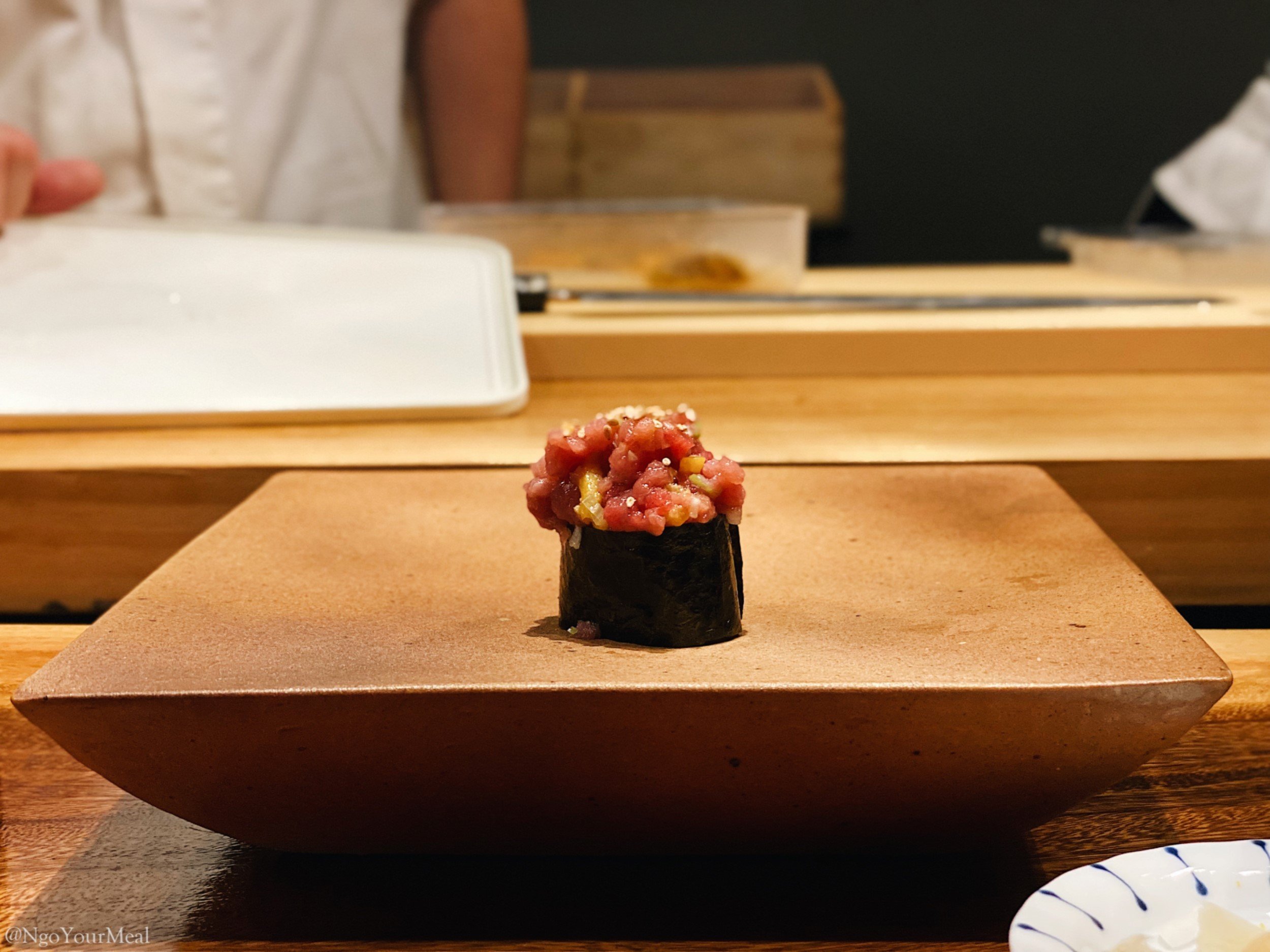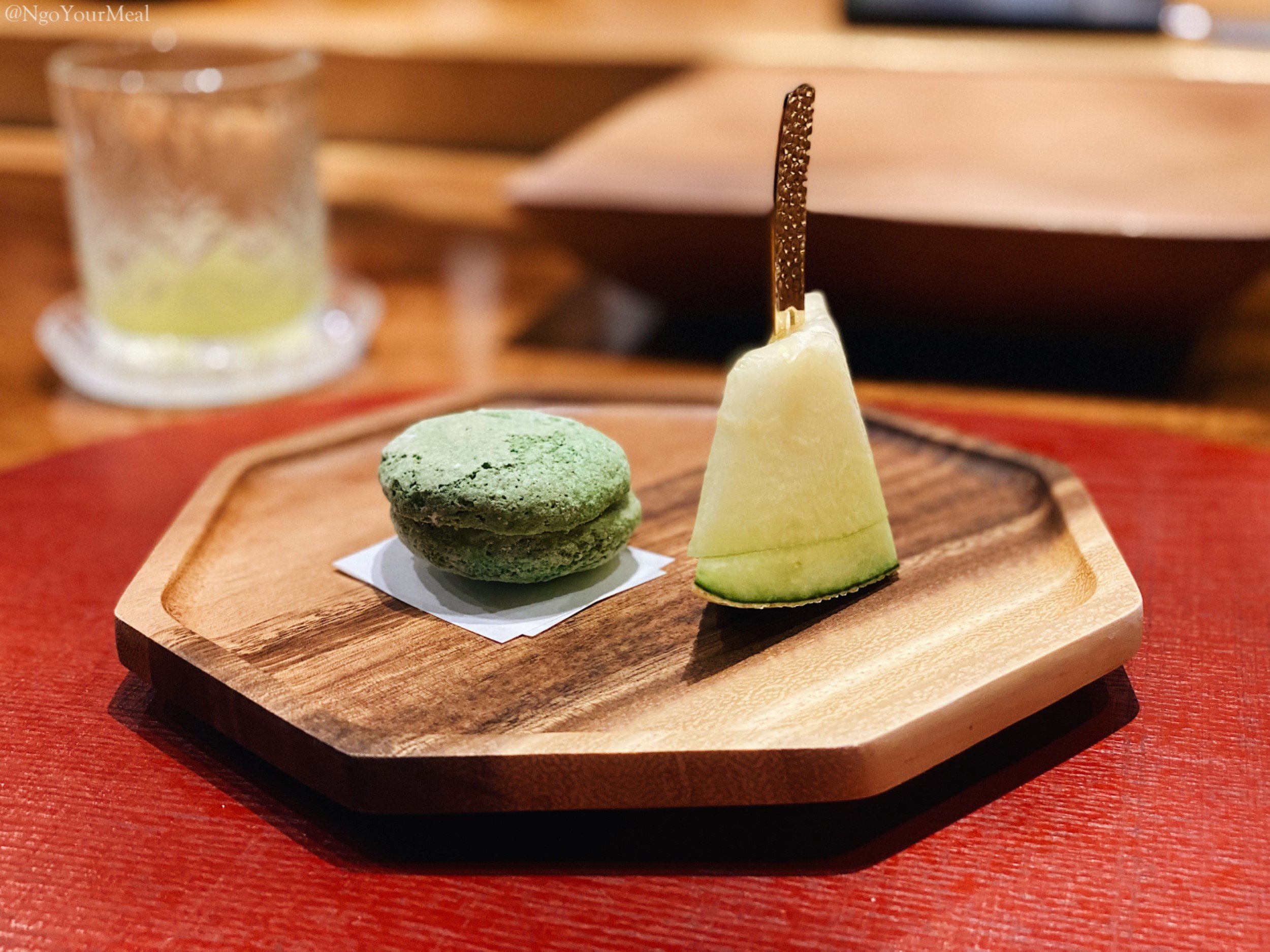Naoki (나오키): Showcasing Seasonal Ingredients
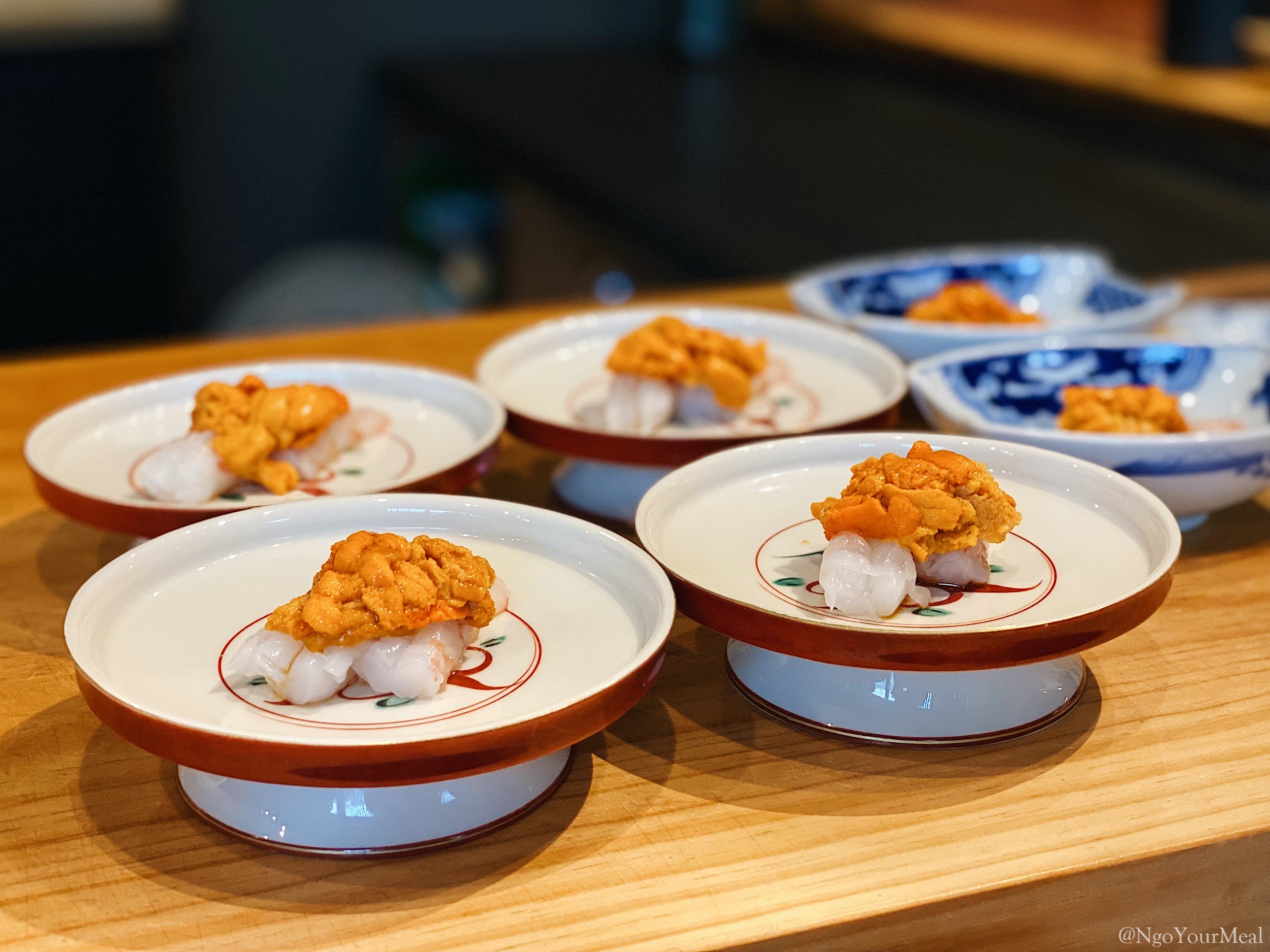
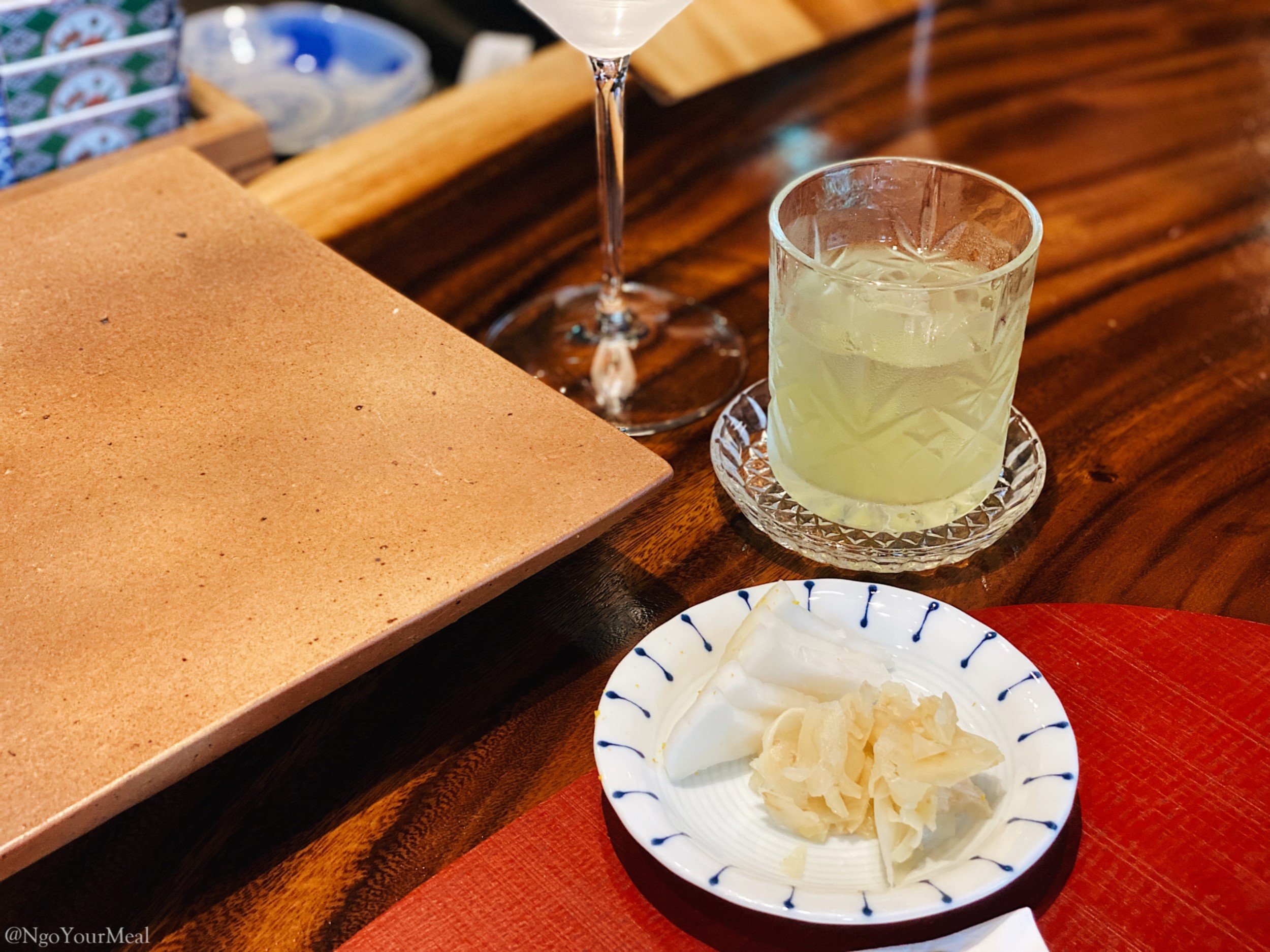
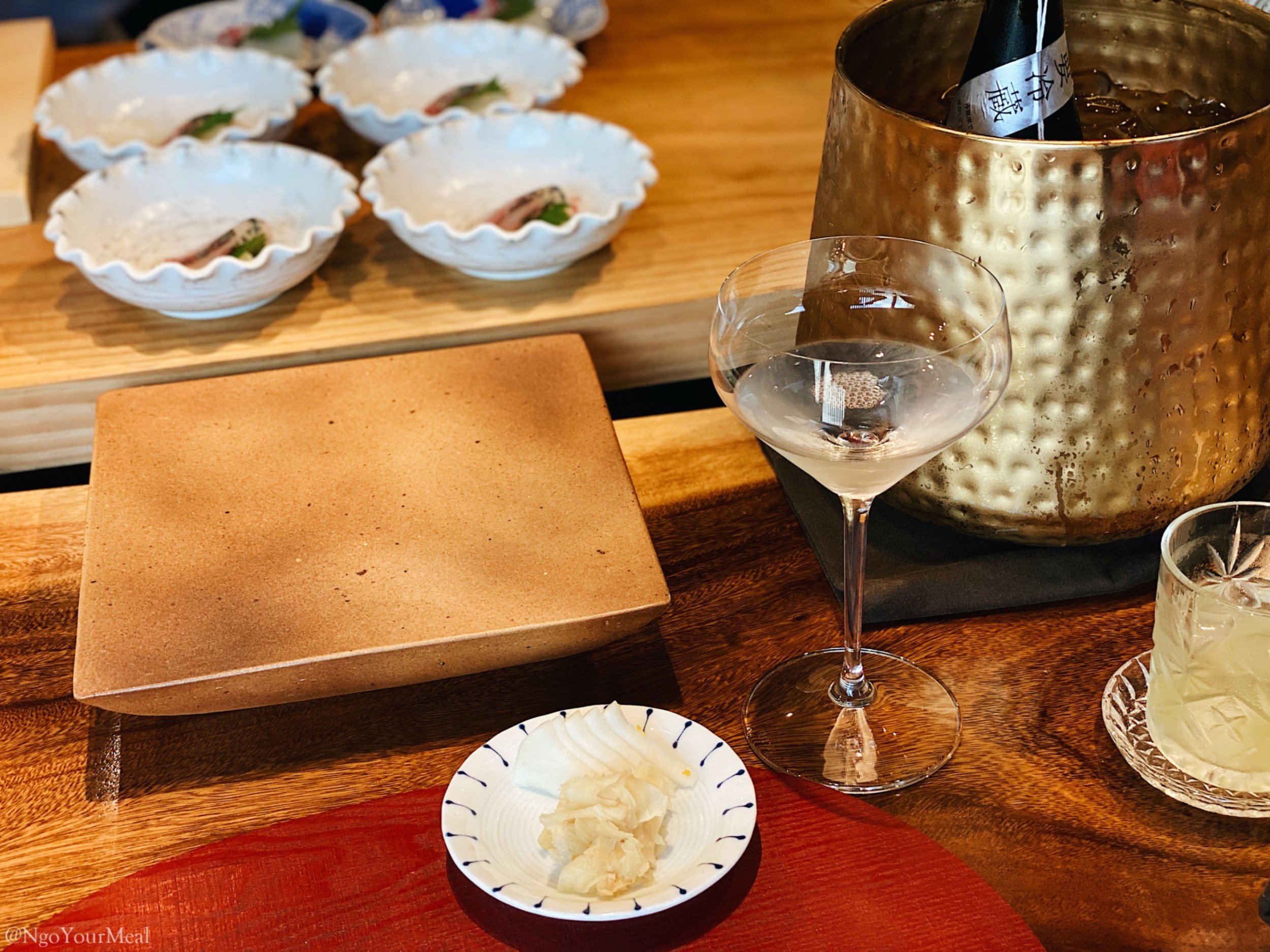
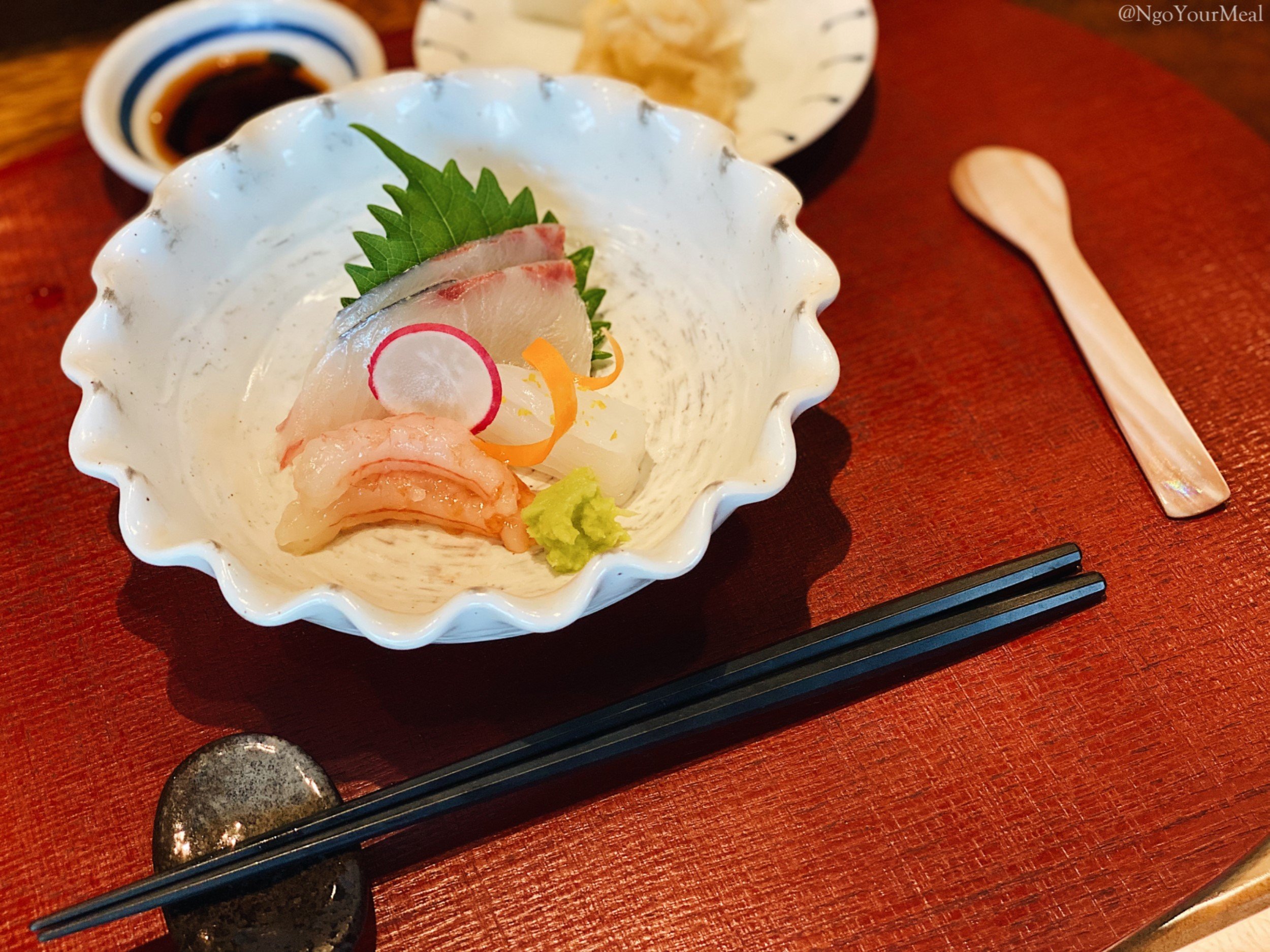
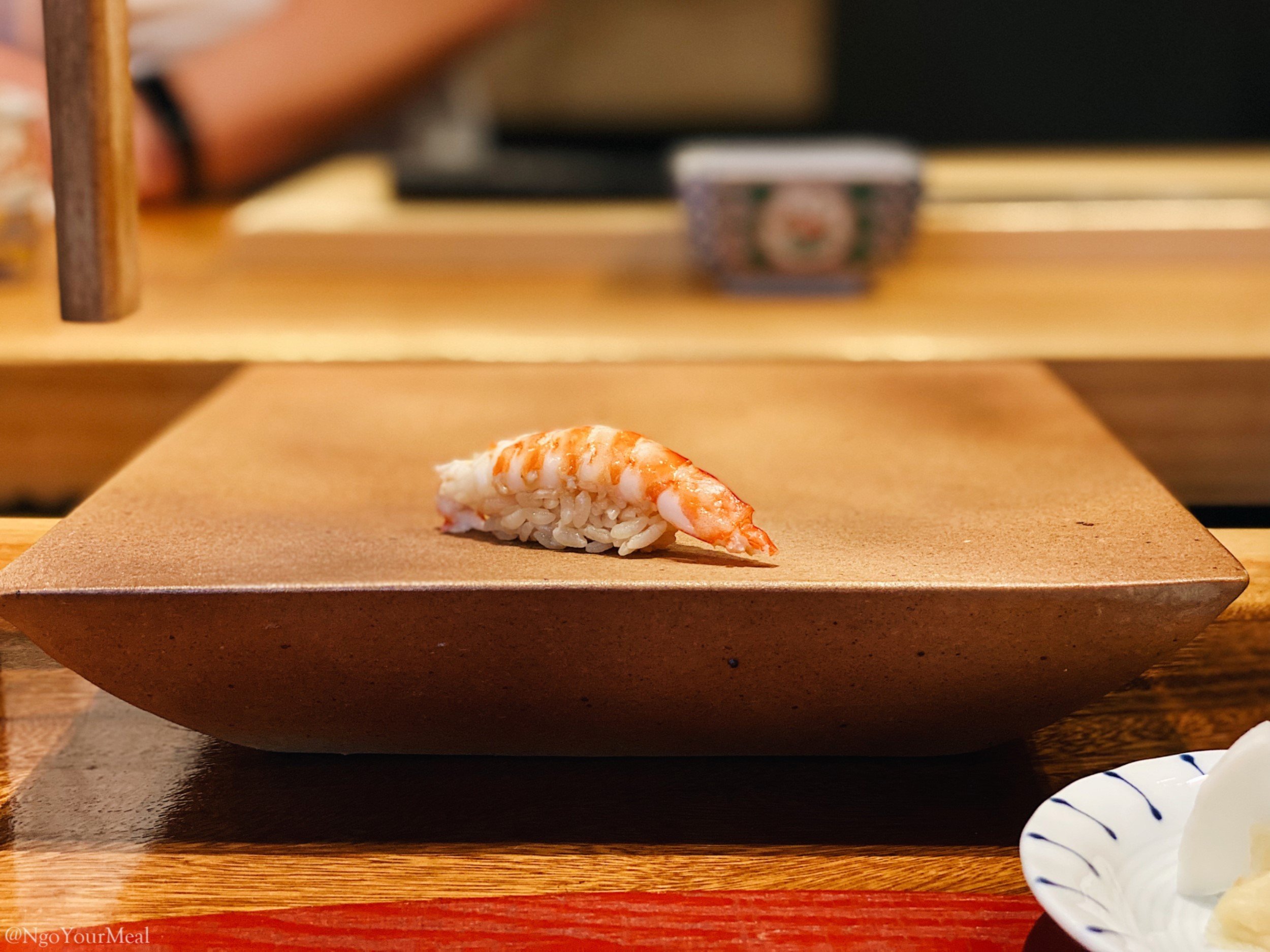
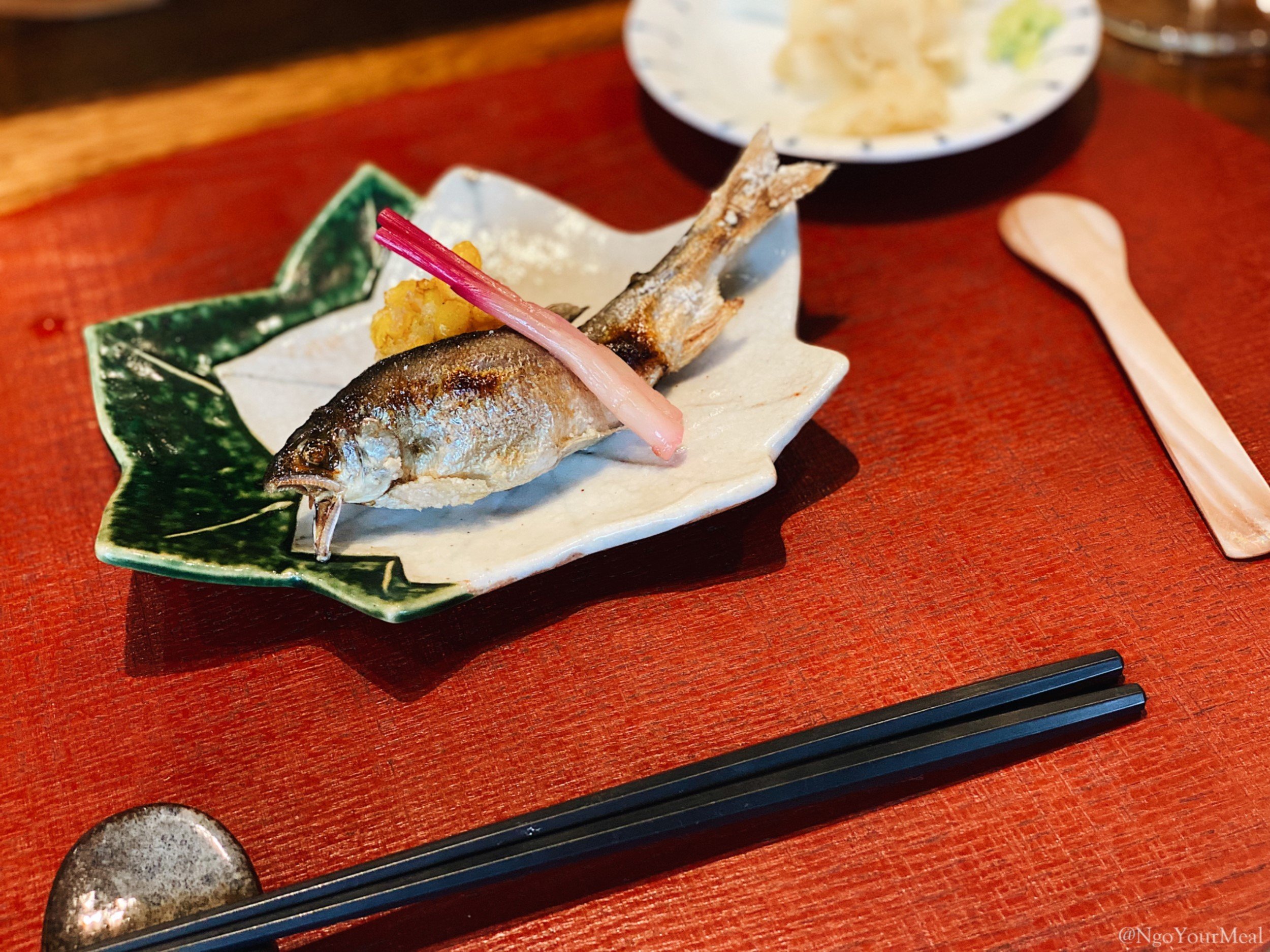
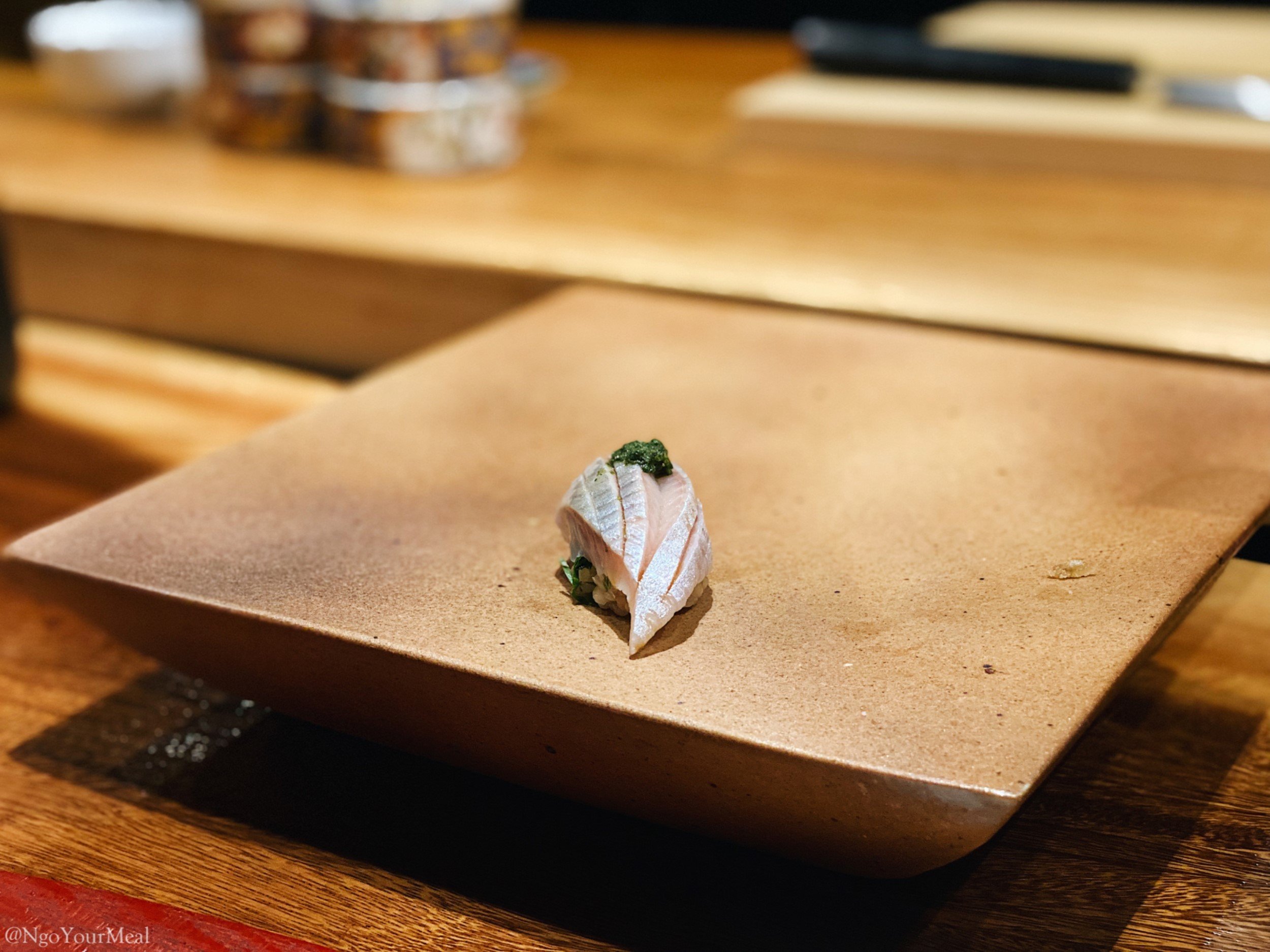
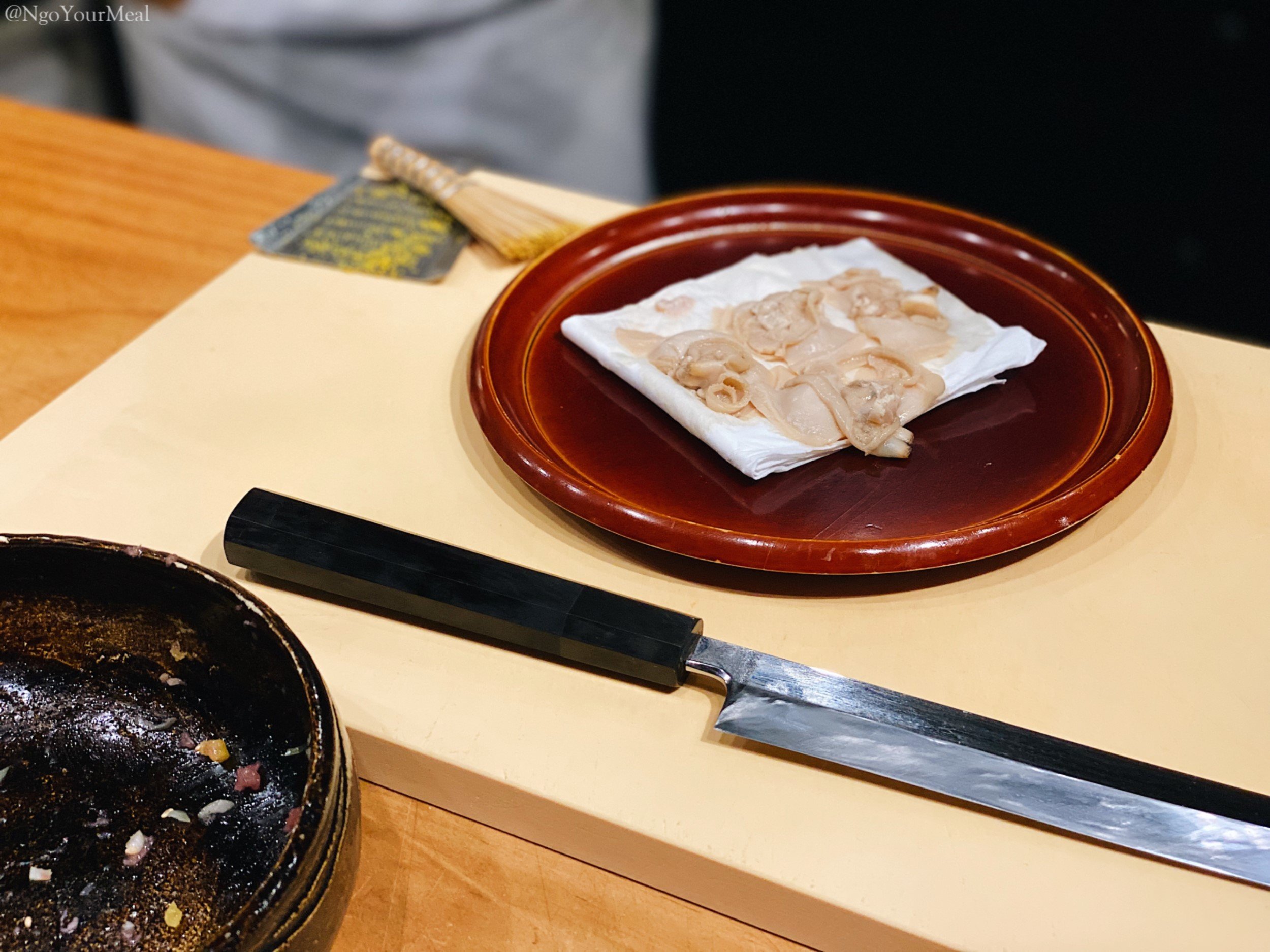
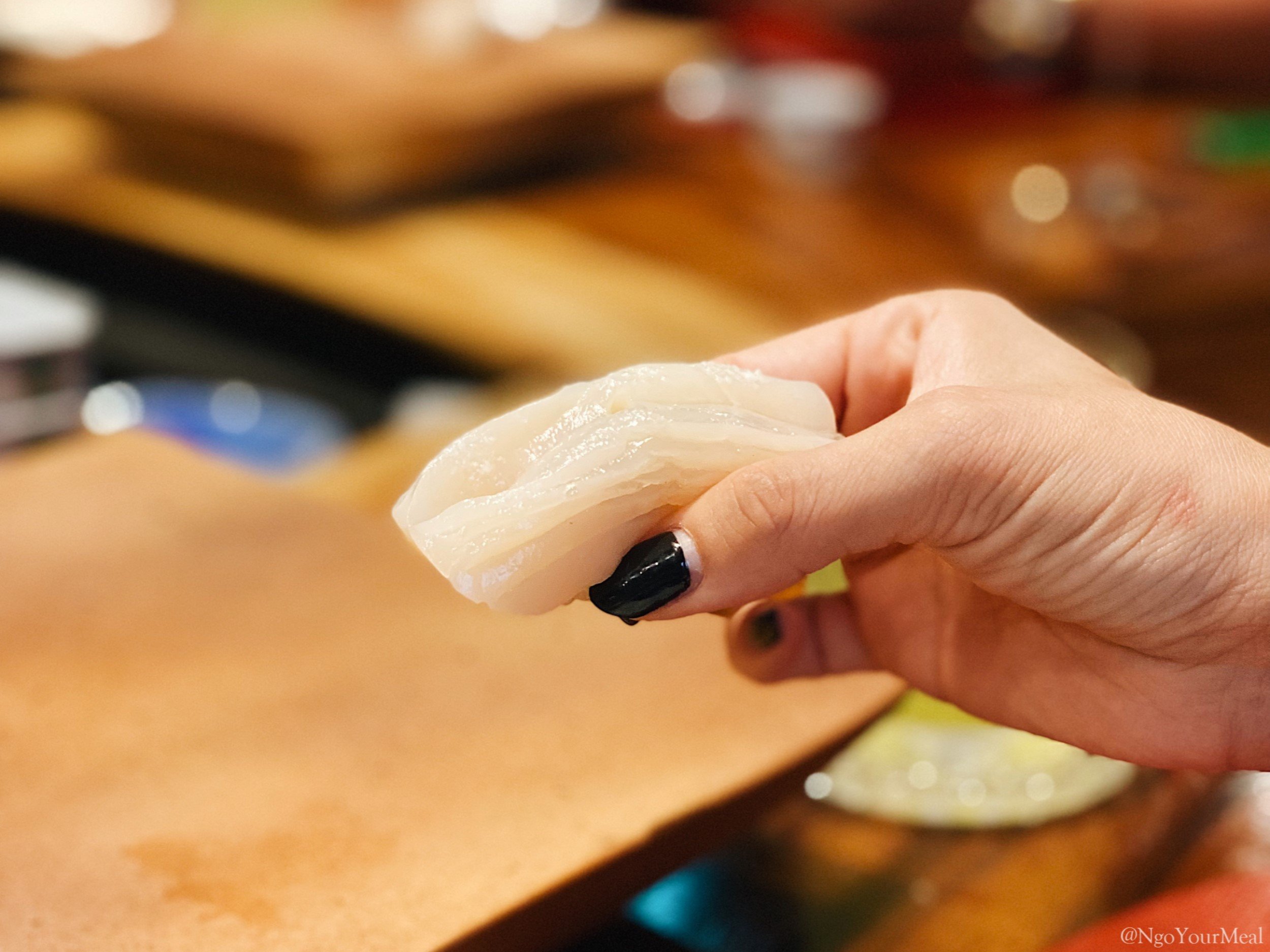
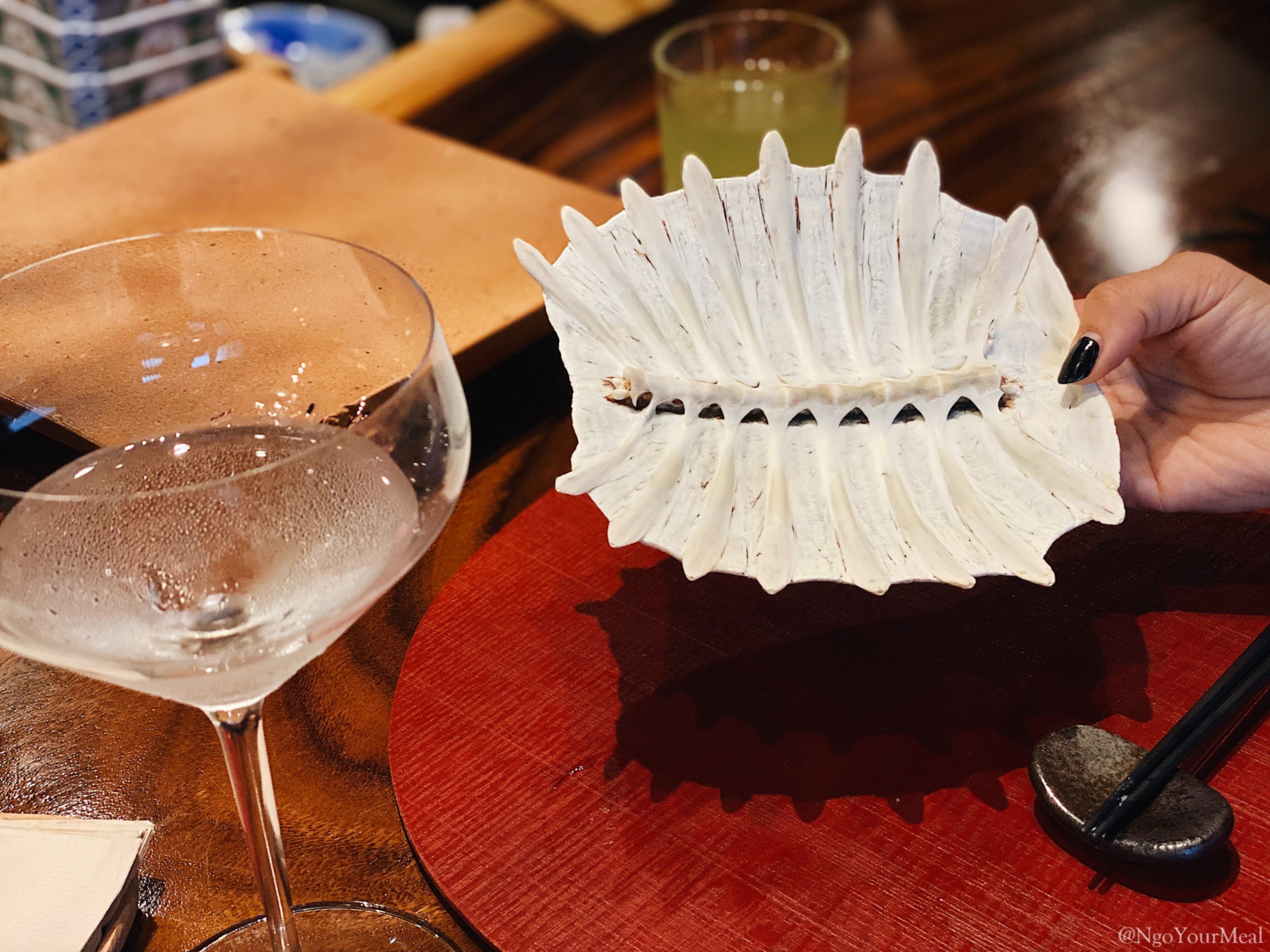
Just a day after exiting my two week quarantine, Annie already knew I would be longing for some excellent meals. With great urgency, she brought me to an omakase at Naoki (나오키) so I could come back to life.
For our visit, Annie and I went to the second Naoki location in Magok-dong (마곡), one of the neighborhoods in Seoul. This branch opened in the summer of 2020 and was just recently renovated. The dining area was spacious, modern, and surprisingly cozy. Each of the ten seats had a full view of the open kitchen so even before Annie and I took our seats, we were already excited.
Our dinner started off the same way as any of our other meals - with a first glance at the drinks menu. We opted for a dry, floral Junmai Daiginjo from Niigata. We also considered shochu but predicted this meal would be more of a marathon rather than a sprint. The meal that ensued was phenomenal in terms of both quality and volume.
This three-hour experience was practically a blend between a sushi omakase and a kaiseki (traditional multi-course meal). It had some of the components of a kaiseki, including a hassun (seasonal themed dish), mukozuke (sashimi), futamono (a lidded dish / soup), su-zakana (vinegared palate cleanser), and many others. A typical kaiseki doesn’t usually have sushi, which is why I felt like this meal was also part omakase. In the middle of our meal (i.e., after eight dishes), the chef proceeded to craft another nine pieces of sushi. As if we weren’t full yet, we ended with inaniwa udon, tamago, and a dessert.
While the volume of food was fascinating, the quality and variety of dishes was the most fun for me. The chef curates the meal based on the freshest, seasonal ingredients available at the time. Some favorites include Dokdo Shrimp with Goseong Uni, Akamatsu (Blackthroat Seaperch), Steamed and Lightly Fried Abalone, and Grilled Ayu with Chodang Corn Tempura. You can read more about each dish in the post below.
The entire meal was a delight. Even though I can’t speak or understand Korean, I could tell that the chef is humble, knowledgeable, and skillful. Special thanks to Annie for choosing the restaurant and translating every single dish we had. Without a doubt, we will come back the next time we are in Korea.
How to Reserve:
By Phone: Call 010-8356-9321 then they will provide bank account information to send the 30,000 WON deposit.
Online via Catchtable
The image shows the building where Naoki is located.
Iced Green Tea (Complimentary)
Kamo Nishiki Nifudasake Junmai Daiginjo Sake. This sake is from the Niigata Prefecture with a 40% polishing ratio. This sake is floral on the nose and has clean, dry tasting notes. It’s so smooth to drink. Annie and I probably could have finished a second bottle.
The sake was served in a special glass by Riedel. At 110,000 WON, I thought this was a great deal.
Pike Eel with Plum Sauce. The pike eel was steamed and boiled slightly. The flavor is mild but enhanced with that tangy plum sauce. It was a pleasant starter.
Sweet Shrimp, Squid with Shaved Yuzu, Striped Horse Mackerel. The sweet shrimp was incredible. According to Annie, it really “melted”.
Grilled Ayu Sweetfish with Chodang Corn Tempura and Pickled Ginger. The ayu can be eaten whole because the bones are so small and thin. This is a popular dish during the summer months.
It was accompanied by some chodang corn tempura. This type of corn is super sweet. In fact, it has two to three times higher sugar content than regular corn.
Freshwater Eel with Cucumber and Ginger. The eel was only slightly cooked and felt almost raw. It was an interesting texture but we loved it.
Dokdo Dohwa Shrimp and Goseong Uni. This shrimp is named after the islands off the eastern coast of South Korea. While the islands are not that habitable, the surrounding waters are considered rich fishing grounds. These shrimps can grow up to 25cm in length and has a beautiful peach color. Its meat is sweet and silky. Each piece can cost up to 30,000 WON and is considered an expensive delicacy in South Korea.
There is currently a territorial dispute over these islands and it involves some intense drama between South Korea and Japan. All I’m going to say is that the islands are closer in distance to South Korean shores. There are also Korean historical records dating back to the 6th century that describe these islands, while the Japanese “incorporated” it in 1905.
Chilled Vegetables. In traditional kaiseki meals, this dish is called the su-zakana. It’s served chilled and acts as a palate cleanser. Naoki’s came with eggplant, lotus root, tomato, kabocha, cucumber pepper, and jure (vinegar jelly) sauce.
Softshell Turtle Soup, Sticky Rice, and Egg Tofu. This soup was rich and succulent. I loved how much flavor there was despite the broth being so clear. The sticky rice was also filled with softshell turtle meat. During our visit, the chef presented us with the shell so we could take a closer look.
Steamed and Fried Abalone. This was one of the best abalone dishes I’ve had. The abalone was steamed for three hours before being lightly fried. The result was a tender, delicious bite with just the right amount of crisp.
The perfected mollusk was placed over a sauce made from its own intestine.
Mediterranean Sea Bass.
Scallop with Salt and Sudachi.
Kuruma Ebi (Japanese Tiger Prawn). Served slightly warm, this prawn is firm and richly sweet.
Fried Shrimp Head and Legs. Eat the whole thing for a nice, salty snack!
Akamutsu Blackthroat Seaperch. This fish is highly prized in Japanese cuisine thanks to its delicately sweet but ultra rich flavor.
Annie is happy and full… but we still have a few more dishes to go!
Miso soup.
Chutoro.
Herring with Shiso and Ginger.
Goseong Uni (left) and Tongyeong Uni (right). Both of these sea urchins come from the southern part of South Korea. In fact, Goseong and Tongyeong are neighboring cities only twenty minutes away from each other by train. It’s interesting to see how much the sea urchin can vary in taste and color.
I liked the sea urchin from Goseong because it was more crisp and refreshing. Naoki also served this almost ice cold. I could eat this all day.
The one from Tongyeong was more rich and creamy.
Mercenaria Mercenaria. This clam was fresh, delicate, and slightly salty. It wasn’t too chewy so I liked that.
Chopped Tuna and Sesame Seeds.
Tamago. This was made with a shrimp, fish, and egg mix so the flavor was savory but semi-sweet.
Dacquioise and Melon.
